Use of agonists of formyl peptide receptor 2 for treating dermatological diseases
Viswanath , et al. October 13, 2
U.S. patent number 10,799,518 [Application Number 16/566,682] was granted by the patent office on 2020-10-13 for use of agonists of formyl peptide receptor 2 for treating dermatological diseases. This patent grant is currently assigned to ALLERGAN, INC.. The grantee listed for this patent is Allergan, Inc.. Invention is credited to Richard L. Beard, John E. Donello, Edward Hsia, Veena Viswanath.


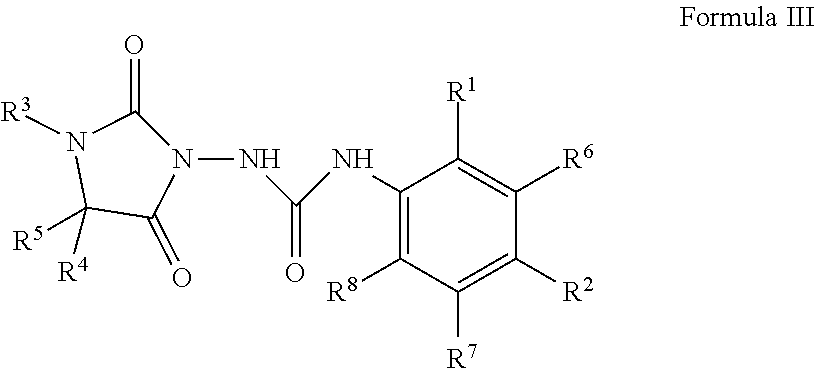


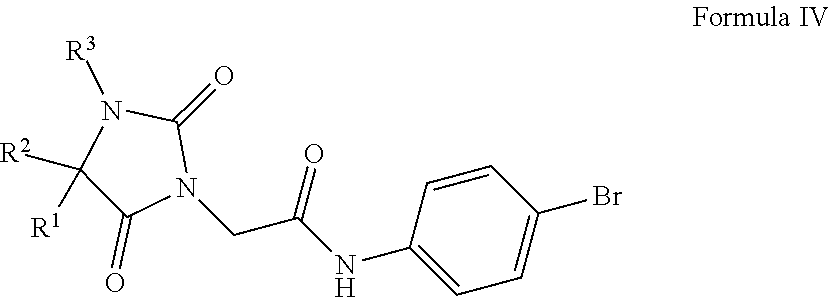

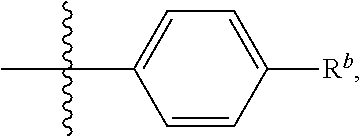

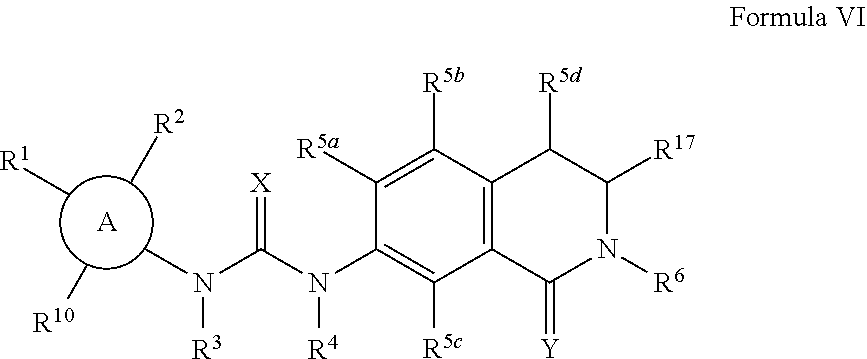


View All Diagrams
| United States Patent | 10,799,518 |
| Viswanath , et al. | October 13, 2020 |
Use of agonists of formyl peptide receptor 2 for treating dermatological diseases
Abstract
The present invention relates to a method for treating dermal inflammation and dermal diseases by local or systemic delivery, in a subject in need of such treatment, which comprises administering a pharmaceutical composition comprising a therapeutically effective amount of at least one agonist of Formyl peptide receptor 2 (FPR2).
| Inventors: | Viswanath; Veena (Irvine, CA), Beard; Richard L. (Newport Beach, CA), Donello; John E. (Dana Point, CA), Hsia; Edward (Irvine, CA) | ||||||||||
|---|---|---|---|---|---|---|---|---|---|---|---|
| Applicant: |
|
||||||||||
| Assignee: | ALLERGAN, INC. (Irvine,
CA) |
||||||||||
| Family ID: | 1000005110471 | ||||||||||
| Appl. No.: | 16/566,682 | ||||||||||
| Filed: | September 10, 2019 |
Prior Publication Data
| Document Identifier | Publication Date | |
|---|---|---|
| US 20200246360 A1 | Aug 6, 2020 | |
Related U.S. Patent Documents
| Application Number | Filing Date | Patent Number | Issue Date | ||
|---|---|---|---|---|---|
| 15490127 | Apr 18, 2017 | 10434112 | |||
| 14196155 | Mar 4, 2014 | ||||
| 61773778 | Mar 6, 2013 | ||||
| Current U.S. Class: | 1/1 |
| Current CPC Class: | C07D 233/80 (20130101); A61K 31/472 (20130101); A61K 31/662 (20130101); A61P 17/14 (20180101); C07D 217/24 (20130101); A61K 31/4725 (20130101); A61P 17/04 (20180101); A61K 31/4166 (20130101); A61P 17/10 (20180101); A61P 17/18 (20180101); C07C 275/42 (20130101); A61P 17/02 (20180101); A61K 31/17 (20130101); C07D 401/06 (20130101); A61K 9/0014 (20130101); A61P 17/06 (20180101); A61P 17/12 (20180101); A61K 31/4178 (20130101); C07C 235/82 (20130101); A61P 35/00 (20180101); A61K 31/196 (20130101); A61K 31/4174 (20130101); C07D 405/14 (20130101); C07D 257/04 (20130101); C07D 235/02 (20130101); A61K 31/192 (20130101); C07D 261/12 (20130101); A61K 31/41 (20130101); A61K 31/55 (20130101); A61K 31/4184 (20130101); C07D 223/10 (20130101); C07F 9/40 (20130101); A61P 17/08 (20180101); A61P 17/16 (20180101); A61K 31/42 (20130101); C07D 409/06 (20130101); A61K 31/4045 (20130101); C07D 405/06 (20130101); A61K 31/683 (20130101); A61K 31/167 (20130101) |
| Current International Class: | A61K 31/683 (20060101); A61P 17/14 (20060101); A61P 17/04 (20060101); A61K 31/55 (20060101); A61P 17/18 (20060101); A61P 35/00 (20060101); A61P 17/02 (20060101); A61P 17/12 (20060101); C07D 409/06 (20060101); C07D 405/14 (20060101); C07D 405/06 (20060101); C07D 401/06 (20060101); C07D 261/12 (20060101); C07D 257/04 (20060101); C07D 235/02 (20060101); C07D 233/80 (20060101); C07D 223/10 (20060101); C07D 217/24 (20060101); C07C 275/42 (20060101); C07C 235/82 (20060101); C07F 9/40 (20060101); A61P 17/06 (20060101); A61P 17/16 (20060101); A61K 31/17 (20060101); A61K 31/196 (20060101); A61K 31/4166 (20060101); A61K 31/42 (20060101); A61K 31/662 (20060101); A61K 9/00 (20060101); A61K 31/167 (20060101); A61K 31/192 (20060101); A61K 31/4045 (20060101); A61K 31/41 (20060101); A61K 31/4174 (20060101); A61K 31/4178 (20060101); A61K 31/4184 (20060101); A61K 31/472 (20060101); A61K 31/4725 (20060101); A61P 17/08 (20060101); A61P 17/10 (20060101) |
References Cited [Referenced By]
U.S. Patent Documents
| 4521210 | June 1985 | Wong |
| 7820673 | October 2010 | Kubo et al. |
| 8440684 | May 2013 | Beard |
| 8492556 | July 2013 | Beard |
| 8507560 | August 2013 | Beard |
| 8541577 | September 2013 | Beard et al. |
| 8580817 | November 2013 | Beard et al. |
| 8653299 | February 2014 | Vuligonada |
| 8729096 | May 2014 | Beard |
| 8809367 | August 2014 | Beard |
| 8816076 | August 2014 | Beard et al. |
| 8846760 | September 2014 | Beard |
| 9428549 | August 2016 | Beard |
| 9579307 | February 2017 | Beard |
| 9974772 | May 2018 | Beard |
| 10172832 | January 2019 | Beard |
| 10301269 | May 2019 | Beard |
| 10434112 | October 2019 | Viswanath |
| 2002/0052417 | May 2002 | Klingler et al. |
| 2011/0144033 | June 2011 | Bernardini et al. |
| 2011/0319454 | December 2011 | Beard et al. |
| 2012/0142726 | June 2012 | Beard et al. |
| 2012/0238628 | September 2012 | Vuligonda et al. |
| 2012/0329873 | December 2012 | Li et al. |
| 2013/0109866 | May 2013 | Beard et al. |
| 2013/0123215 | May 2013 | Beard |
| 2013/0217720 | August 2013 | Beard et al. |
| 2013/0274230 | October 2013 | Beard et al. |
| 2014/0256684 | September 2014 | Beard |
| 2015/0080466 | March 2015 | Beard |
| 2016/0272581 | September 2016 | Beard |
| 3103797 | Dec 2016 | EP | |||
| 2770989 | Sep 2018 | EP | |||
| 63232846 | Sep 1988 | JP | |||
| 2009-0121832 | Nov 2009 | KR | |||
| 2001014328 | Mar 2001 | WO | |||
| 0158932 | Aug 2001 | WO | |||
| 2007076055 | Jul 2007 | WO | |||
| 2010056778 | May 2010 | WO | |||
| 2013009543 | Jan 2013 | WO | |||
| 2013062947 | May 2013 | WO | |||
| 2013070600 | May 2013 | WO | |||
| 2013071203 | May 2013 | WO | |||
Other References
|
Chiang, Nan, et al., The Lipoxin Receptor ALX: Potent Ligand-Specific and Stereoselective Actions in Vivo, Pharmacological Reviews, 2006, 463-487, 58, No. 3. cited by applicant . Cross et al, Rules for the Nomenclature of Organic Chemistry, Pure & Appll. Chem, 1976, 11-30, vol. 45. cited by applicant . Database Registry Chemical Abstracts Service, STN Database acccession No. 879346-46-0, Apr. 5, 2006, 1 Page, Columbus, Ohio. cited by applicant . Database Registry Chemical Abstracts Service, STN Database accession No. 1052620-77-5, Sep. 25, 2008, 1 Page, Columbus, Ohio. cited by applicant . Database Registry Chemical Abstracts Service, STN Database accession No. 1189940-16-6, Oct. 25, 2009, 1 Page, Columbus, Ohio. cited by applicant . Database Registry Chemical Abstracts Service, STN Database accession No. 923193-08-2, Feb. 26, 2007, 1 Page, Columbus, Ohio. cited by applicant . Dufton, N., et al., Therapeutic anti-inflammatory potential of formyl-peptide receptor agonists, Pharmacology & Therapeutics, 2010, 175-188, 127. cited by applicant . Dufton, Neil et al., Anti-Inflammatory Role of Murine Formyl-Peptide Receptor 2:Ligand-Specific Effects on Leukocyte Responses and Experimental Inflammation, The Journal of Immunology, Jan. 2010, pp. 2611-2619, 184, The American Association of Immunologist, Inc., Bethesda, MD. cited by applicant . Gavins, Felicity N., et al., Leukocyte recruitment in the brain in sepsis: involvement of the annexin 1-FPR2/ALX anti-inflammatory system, FASEB J., Sep. 10, 2012, 4977-4989, 26. cited by applicant . Gronert, Karsten, Lipoxins in the eye and their role in wound healing, Prostaglandins, Leukotrienes and Essential Fatty Acids, 2005, pp. 221-229, 73, Elsevier Ltd. cited by applicant . Gronert, Karston, et al., A Role for the Mouse 12/15-Lipoxygenase Pathway in Promoting Epithelial Wound Healing and Host Defense, The Journal of Biological Chemistry, 2005, pp. 15267-15278, 280, No. 15. cited by applicant . Ikawi, K., et al., Preparation of Chiral Stationary Phase via Activated Carbamate Intermediate for Liquid Chromatographic Optical Resolution, Chromatographia, 1987, 727-730, 23 (10). cited by applicant . International Search Report dated Jul. 18, 2014, for PCT Application No. PCT/US2014/020273 filed Mar. 4, 2014, 6 pages. cited by applicant . International Search Report dated Jun. 28, 2013, for PCT/US2013/036715, filed on Apr. 16, 2013, in the name of Allergan, Inc. cited by applicant . Iwaki, K., et al., Optical resolution of enantiomeric amino acid derivatives on a naphthylethylurea multiple-bonded chiral stationary phase prepared via an activated carbamate intermediate, J. Chromatography, 1987, 117-122, 404. cited by applicant . Leedom, Alexander J., et al., Endogenous LXA4 Circuits Are Determinants of Pathological Angiogenesis in Response to Chronic Injury, The American Journal of Pathology, Jan. 2010, pp. 74-84, 176, No. 1, American Society for Investigative Pathology. cited by applicant . Leoni, Giovanna, et al., Annexin A1, formyl peptide receptor, and NOX1 orchestrate ephithelial repair, The Journal of Clinical Investigation, 2013, 443-54, 123. cited by applicant . Maderna, P., et al., FPR2/ALX receptor expression and internalization are critical for lipoxin A4 and annexin-derived peptide-stimulated phagocytosis, The FASEB Journal, 2010, 4240-4249, 24. cited by applicant . Medeiros, Rodrigo, et al., Molecular Mechanisms of Topical Anti-Inflammatory Effects of Lipoxin A4 in Endotoxi-Induced Uveitis, Molecular Pharmacology, 2008, pp. 154-161, 74. cited by applicant . Migeotte, Isabelle et al., Formyl peptide receptors: A promiscuous subfamily of G protein-coupled receptors controlling immune responses, Cytokine & Growth Factor Reviews, 2006, 501-519, 17, US. cited by applicant . Reville, Keira, et al., Lipoxin A4 Redistributes Myosin IIA and Cdc42 in Macrophages: Implications for Phagocytosis of Apoptotic Leukocytes, The Journal of Immunology, 2006, pp. 1878-1888, 176. cited by applicant . Serhan, Charles N., Resolution Phase of Inflammation: Novel Endogenous Anti-Inflammatory and Proresolving Lipid Mediators and Pathways, The Annual Reviews of Immunology, 2007, pp. 101-37, 25, Annual reviews. cited by applicant . Stahl, P., et al., Pharmaceutical Salts, Handbook of Pharmaceutical Salts: Propoerties, Selection, and Use, 2002, 329-345, Verlag Helvetica Chimica Acta, Zurich. cited by applicant . Takano, Tomoko, et al., Aspirin-triggered 15-Epi-Lipoxin-A4 (LXa4) and LXA4 Stable Analogues Are Potent Inbitiors of Acute Inflammation: Evidence for Anti-inflammatory Receptors, Journal of Experimental Medicine, May 5, 1997, 1693-1704, 185, No. 9, The Rockerfeller University Press. cited by applicant . Tsuruki, Takahiro et al., Orally administered FPRL1 receptor agonist peptide MMK-1 inhibits etoposide-induced alopecia by a mechanism different from intraperitoneally administered MMK-1, Peptides, 2006, 820-825, 27, US. cited by applicant . Tsuruki, Takahiro, et al., Mechanism of the Protective Effect of Intraperitoneally Administered Agonists for Formyl Peptide Receptors against Chemotherapy-Induced Alpecia, Bioscience, Biotechnology & Biochemistry, 2007, pp. 1198-1202, 71, No. 5. cited by applicant . Yamasaki, Kenshi et al., Increased serine protease activity and cathelicidin promotes skin inflammation in rosacea, Nature Medicine, Aug. 2007, pp. 975-980, vol. 13, No. 8, Nature Publishing Group. cited by applicant. |
Primary Examiner: Tran; My-Chau T.
Attorney, Agent or Firm: Bass; Jonathan
Parent Case Text
RELATED APPLICATIONS
This application is a continuation of U.S. patent application Ser. No. 15/490,127, filed Apr. 18, 2017, which is a continuation of U.S. patent application Ser. No. 14/196,155, filed Mar. 4, 2014, now abandoned, which claims the benefit of U.S. Provisional Patent Application Ser. No. 61/773,778 filed Mar. 6, 2013, which are herein incorporated by reference in their entireties and serve as the basis of a priority and/or benefit claim for the present application.
Claims
What is claimed is:
1. A method of treating dermal inflammation or a dermal disease in a subject in need of such treatment, the method comprising administering to the subject a pharmaceutical composition comprising a therapeutically effective amount of a compound selected from the group consisting of: TABLE-US-00005 ##STR00203## {[2S,3S)-2-{[(4- bromophenyl)carbamoyl] amino}-3- methylpentanoyl] amino}acetic acid ##STR00204## {[2S)-2-{[(4-bromo- 2-fluorophenyl) carbamoyl]amino}-4- methylpentanoyl] amino}acetic acid ##STR00205## {[2S)-2-{[(4- bromophenyl) carbamoyl]amino}-4- methylpentanoyl] amino}acetic acid
and pharmaceutically acceptable salts thereof, wherein the dermal inflammation or dermal disease is selected from the group consisting of dermal wound healing, hypertrophic scars, keloids, burns, rosacea, atopic dermatitis, acne, psoriasis, seborrheic dermatitis, actinic keratoses, basal cell carcinoma, squamous cell carcinoma, melanoma, viral warts, photoaging, photodamage, melasma, post-inflammatory hyperpigmentation, disorders of pigmentation and alopecia, scarring and non-scarring forms; and wherein the administration is by local delivery.
2. The method of claim 1, wherein the compound is {[(2S,3S)-2-{[(4-bromophenyl)carbamoyl]amino}-3-methylpentanoyl]amino}ace- tic acid: ##STR00206## or a pharmaceutically acceptable salt thereof.
3. The method of claim 1, wherein the compound is {[(2S)-2-{[(4-bromo-2-fluorophenyl)carbamoyl]amino}-4-methylpentanoyl]ami- no}acetic acid: ##STR00207## or a pharmaceutically acceptable salt thereof.
4. The method of claim 1, wherein the compound is {[(2S)-2-{[(4-bromophenyl)carbamoyl]amino}-4-methylpentanoyl]amino}acetic acid: ##STR00208## or a pharmaceutically acceptable salt thereof.
5. The method of claim 1, wherein the local delivery is topical dermal delivery.
6. The method of claim 2, wherein the local delivery is topical dermal delivery.
7. The method of claim 3, wherein the local delivery is topical dermal delivery.
8. The method of claim 4, wherein the local delivery is topical dermal delivery.
9. The method of claim 5, wherein the pharmaceutical composition is in a form selected from the group consisting of a cream, a lotion, a gel, a solution, a spray, a foam, a suspension and an emulsion.
10. The method of claim 6, wherein the pharmaceutical composition is in a form selected from the group consisting of a cream, a lotion, a gel, a solution, a spray, a foam, a suspension and an emulsion.
11. The method of claim 7, wherein the pharmaceutical composition is in a form selected from the group consisting of a cream, a lotion, a gel, a solution, a spray, a foam, a suspension and an emulsion.
12. The method of claim 8, wherein the pharmaceutical composition is in a form selected from the group consisting of a cream, a lotion, a gel, a solution, a spray, a foam, a suspension and an emulsion.
Description
BACKGROUND OF THE INVENTION
Field of the Invention
The present invention relates to a method for treating dermal inflammation and dermal diseases by local or systemic delivery, in a subject in need of such treatment, which comprises administering a pharmaceutical composition comprising a therapeutically effective amount of at least one agonist of Formyl peptide receptor 2 (FPR2).
Summary of the Related Art
The formyl peptide receptor (FPR) family belongs to the seven transmembrane domain G-protein-coupled receptor (GPCR) family. This family includes 3 members in humans and one member of this family FPR2 (also known as FPRL-1, ALXA4) is expressed predominantly on inflammatory cells such as monocytes and neutrophils, as well as on T cells and has been shown to play a critical role in leukocyte trafficking during inflammation and human pathology (Chiang N, Serhan C N, Dahlen, S, Drazen J M, Hay D W P, Rovati E, Shimizu T, Yokomizo T, Brink, C. The lipoxin receptor ALX: Potent ligand-specific and stereoselective actions in vivo. Pharmacological Reviews 2006; 58: 463-519). FPR2 is an exceptionally promiscuous receptor that responds to a menagerie of structurally diverse exogenous and endogenous ligands, including serum amyloid A (SAA), chemokine variant sCK.beta.8-1, the neuroprotective peptide humanin, anti-inflammatory eicosanoid lipoxin A4 (LXA4) and glucocorticoid-modulated protein annexin A1 (Chiang N, Serhan C N, Dahlen, S, Drazen J M, Hay D W P, Rovati E, Shimizu T, Yokomizo T, Brink, C. The lipoxin receptor ALX: Potent ligand-specific and stereoselective actions in vivo. Pharmacological Reviews 2006; 58: 463-519). FPR2 has been shown to transduce anti-inflammatory effects of arachidonic acid derived Lipoxin A4 (LXA4) in many systems, and has been shown to play a key role in the resolution of inflammation (Dufton N, Perretti M. Therapeutic anti-inflammatory potential of formyl peptide receptor agonists. Pharmacology & Therapeutics 2010; 127: 175-188). FPR2 knockout mice show exaggerated inflammation in disease conditions as expected by the biological role of the receptor (Dufton N, Hannon R, Brancaleone V, Dalli J, Patel H B, Gray M, D'Aquisto F, Buckingham J C, Perretti M, Flower R J. Anti-inflammatory role of the murine formyl-peptide receptor 2: Ligand-specific effects on leukocyte responses and experimental inflammation. Journal of Immunology 2010; 184: 2611-2619. Gavins F N E, Hughes E L, Buss N A P S, Holloway P M, Getting S J, Buckingham J C. Leukocyte recruitment in the brain in sepsis: involvement of the annexinl FPR2/ALX anti-inflammatory system. FASEB 2012; 26: 1-13).
Activation of FPR2 by lipoxin A4 or its analogs and by Annexin I protein has been shown to result in anti-inflammatory activity by promoting active resolution of inflammation which involves inhibition of polymorphonuclear neutrophils (PMNs) and eosinophils migration and also stimulate monocyte migration enabling clearance of apoptotic cells from the site of inflammation in a nonphlogistic manner (Gavins F N E, Hughes E L, Buss N A P S, Holloway P M, Getting S J, Buckingham J C. Leukocyte recruitment in the brain in sepsis: involvement of the annexinl FPR2/ALX anti-inflammatory system. FASEB 2012; 26: 1-13, Maderna P, Cotten D C, Toivonen T, Dufton N, Dalli J, Perretti M, Godson C. FPR2/ALX receptor expression and internalization are critical for lipoxin A4 and annexin-derived peptide-stimulated phagocytosis. FASEB 2010; 24: 4240-4249). In addition, FPR2 has been shown to inhibit natural killer (NK) cytotoxicity and promote activation of T cells which further contributes to down regulation of tissue damaging inflammatory signals. FPR2 interaction with LXA4 and Annexin has been shown to be beneficial in experimental models of dermal inflammation, angiogenesis, epithelial migration, edema, alopecia and corneal wound healing. (Reville K, Cream J K, Vivers S, Dransfield I, Godson C. Lipoxin A4 redistributes Myosin IIA and Cdc42 in macrophages: Implications for phagocytosis of apoptotic leukocytes. Journal of Immunology 2006; 176: 1878-1888; Serhan C. Resolution phase of inflammation: Novel endogenous anti-inflammatory and proresolving lipid mediators and pathways. Annual reviews of Immunology 2007; 25: 101-137; Takano T, Fiore S, Maddox J F, Brady H R, Petasis N A, Serhan C N. Aspirin-triggered 15-epi-lipoxin A4 and LXA4 stable analogues are potent inhibitors of acute inflammation: evidence for anti-inflammatory receptors. Journal of Experimental Medicine 1997; 185: 1693-1704.; Leoni G, Alam A, Neumann P A, Lambeth J D, Cheng G, McCoy J, Hilgarth R S, Kundu K, Murthy N, Kusters D, Reutelingsperger C, Perretti M, Parkos C A, Neish A S, Nusrat A. Annexin A1, formyl peptide receptor, and NOX1 orchestrate epithelial repair. Journal of Clinical Investigation. 2013; 123:443-54; Leedom A, Sullivan A B, Dong B, Lau D, Gronert K. Endogenous LXA4 circuits are determinants of pathological angiogenesis in response to chronic injury. American Journal of Pathology 2010; 176: 74-84; Tsuruki T, Takahata K, Yoshikawa M. Mechanism of the protective effect of intraperitoneally administered agonists for formyl peptide receptors against chemotherapy-induced alopecia. Biosci Biotechnology Biochemistry. 2007; 71:1198-202).
Targeting FPR2 selectively would also have benefits in skin wound healing given its potent anti-inflammatory and pro-epithelial repair role. In addition, some skin diseases have been shown to have an abnormal expression of LL37, a pro-inflammatory cathelicidin which has been shown to be a natural ligand of FPR2. In the chronic inflammatory disease Rosacea, LL37 is highly expressed and is believed to play a key role in the pathogenesis (Yamasaki K, Di Nardo A, Bardan A, Murakami M, Ohtake T, Coda A, Dorschner R A, Bonnart C, Descargues P, Hovnanian A, Morhenn V B, Gallo R L. Increased serine protease activity and cathelicidin promotes skin inflammation in rosacea. Nature Medicine. 2007; 13:975-80).
BRIEF DESCRIPTION OF THE INVENTION
The present invention relates to a method for treating dermal inflammation and dermal diseases by local or systemic delivery, in a subject in need of such treatment, which comprises administering a pharmaceutical composition comprising a therapeutically effective amount of at least one agonist of Formyl peptide receptor 2 (FPR2).
Given the anti-inflammatory axis of LXA4-FPR2 we propose that FPR2 agonists will be useful in inhibiting LL-37-mediated inflammatory diseases such as Rosacea. Pharmaceutical utility of lipoxin A4 and its analogs are hampered by inherent physicochemical properties of the natural poly-olefinic natural product. Therefore, small molecule anti-inflammatory agonists of FPR2 would have a wide variety of therapeutic benefit in inflammatory disorders especially in the skin. FPR2 is widely expressed in human skin and its appendages. FPR2 thus represents an important novel pro-resolutionary molecular target for the development of new therapeutic agents in dermatological diseases with excessive inflammatory responses.
The invention pertains to the ability of FPR2 agonists to exhibit dermal anti-inflammatory activity with chemical stability and suitable for topical dermal delivery. These FPR2 compounds show good potency at the receptor and, importantly, the FPR2 compounds are topically active, and therefore could be administered in many forms, including but not limited to creams, lotions, gels, solutions, sprays, and foams. These compounds may also be administered IV, intramuscularly, intrathecally, subcutaneously, orally or intraperitoneally. These compounds will be useful for the treatment of dermatological diseases including, but not limited to, rosacea, rosacea fulminans, sunburn, psoriasis, menopause-associated hot flashes, flushing and redness associated with hot flashes, erythema associated with hot flashes, hot flashes resulting from orchiectomyatopic dermatitis, treatment of redness and itch from insect bites, photoaging, seborrheic dermatitis, acne, allergic dermatitis, telangiectasia (dilations of previously existing small blood vessels) of the face, angioectasias, rhinophyma (hypertrophy of the nose with follicular dilation), acne-like skin eruptions (may ooze or crust), burning or stinging sensation, erythema of the skin, cutaneous hyperactivity with dilation of blood vessels of the skin, Lyell's syndrome, Stevens-Johnson syndrome, local itching and discomfort associated with hemorrhoids, hemorrhoids, erythema multiforme minor, erythema multiforme major, erythema nodosum, eye puffiness, urticaria, pruritis, purpura, varicose veins, contact dermatitis, atopic dermatitis, nummular dermatitis, generalized exfoliative dermatitis, stasis dermatitis, lichen simplex chronicus, perioral dermatitis, pseudofolliculitis barbae, granuloma annulare, actinic keratosis, basal cell carcinoma, squamous cell carcinoma, eczema, dermal wound healing, hypertrophic scars, keloids, burns, rosacea, atopic dermatitis, acne, psoriasis, seborrheic dermatitis, actinic keratoses, basal cell carcinoma, squamous cell carcinoma, melanoma, viral warts, photoaging, photodamage, melasma, post-inflammatory hyperpigmentation, other disorders of pigmentation, and alopecia (scarring and non-scarring forms). The compounds below would be expected to have therapeutic effects in many different types of skin disease, but have been exemplified by demonstrating accelerated wound healing activity in a mouse dermal wound healing model (FIG. 1), and reduction of LL-37-induced inflammation in mice (FIG. 2) and human keratinocytes (FIG. 2). Anti-inflammatory activity in the LL-37-induced rosacea mouse model has been exemplified with three FPR2 agonists: {[(2S)-2-{[(4-bromo-2-fluorophenyl)carbamoyl]amino}-4-methylpentanoyl]ami- no}acetic acid, {[(2S,3S)-2-{[(4-bromophenyl)carbamoyl]amino}-3-methylpentanoyl]amino}ace- tic acid, {[(2S)-2-{[(4-bromophenyl)carbamoyl]amino}-4-methylpentanoyl]ami- no}acetic acid. Skin penetration of FPR2 agonists following topical administration has also been demonstrated (FIG. 3).
BRIEF DESCRIPTION OF THE DRAWINGS
FIG. 1 FPR2 agonists show potent wound healing in a mouse model of punch dermal wound.
FIG. 2 FPR2 agonists block inflammation induced by LL-37 in mouse ears p<0.05 vs. vehicle, at all-time points.
FIG. 3. Absorption of FPR2 agonists in an in vitro human skin penetration model.
DETAILED DESCRIPTION OF THE INVENTION
The present invention relates to a method for treating dermatological inflammation and dermatological diseases in a subject in need of such treatment, which comprises administering a pharmaceutical composition comprising a therapeutically effective amount of at least one agonist of Formyl peptide receptor 2 (FPR2).
In another aspect, the invention provides the use of at least one agonist of FPR2 for the manufacture of a medicament for the treatment of a dermatological inflammation disease or condition mediated by FPR2 in a mammal
In another aspect, the invention provides a method for treating dermatological inflammatory diseases, which comprises administering a pharmaceutical composition comprising a therapeutically effective amount of at least one agonist of FPR2 as disclosed in U.S. patent application Ser. No. 13/668,835, provided that the compounds have binding activity at the FPR2 receptor.
In another aspect, the invention provides the use of at least one compound as disclosed in U.S. patent application Ser. No. 13/668,835 for the manufacture of a medicament for the treatment of a dermatological disease or condition mediated by FPR2 in a mammal, provided that the compounds have binding activity at the FPR2 receptor.
In another aspect, the invention provides the use of at least one compound as disclosed in U.S. patent application Ser. No. 13/668,835 for treating a dermatological disease or condition mediated by FPR2 in a mammal, provided that the compounds have binding activity at the FPR2 receptor.
The compounds disclosed in U.S. patent application Ser. No. 13/668,835 are represented by Formula I:
##STR00001##
wherein:
R.sup.1 is sec-butyl, C.sub.6-10 aryl, --CH.sub.2--(C.sub.6-10)aryl, --CH.sub.2-heterocycle, C.sub.4-8 cycloalkyl or C.sub.3-8 cycloalkenyl or heterocycle;
R.sup.2 is halogen or methyl;
R.sup.3 is halogen;
R.sup.4 is H, methyl or halogen;
R.sup.5 is OR.sup.6 or NH.sub.2; and
R.sup.6 is H or C.sub.2-4 alkyl.
In another aspect, the invention provides a method for treating dermatological inflammatory diseases, which comprises administering a pharmaceutical composition, comprising a therapeutically effective amount of at least one agonist of FPR2 as disclosed in U.S. patent application Ser. No. 13/523,579, provided that the compounds have binding activity at the FPR2 receptor.
In another aspect, the invention provides the use of at least one compound as disclosed in U.S. patent application Ser. No. 13/523,579 for the manufacture of a medicament for the treatment of a dermatological disease or condition mediated by FPR2 in a mammal, provided that the compounds have binding activity at the FPR2 receptor.
In another aspect, the invention provides the use of at least one compound as disclosed in U.S. patent application Ser. No. 13/523,579 for treating a dermatological disease or condition mediated by FPR2 in a mammal, provided that the compounds have binding activity at the FPR2 receptor.
The compounds disclosed in U.S. patent application Ser. No. 13/523,579 are represented by Formula II:
##STR00002##
wherein:
a is 1 and b is 0;
a is 0 and b is 1;
a is 1 and b is 1;
R.sup.1 is optionally substituted C.sub.1-8 alkyl, optionally substituted C.sub.3-8 cycloalkyl, optionally substituted heterocycle, optionally substituted C.sub.3-8 cycloalkyl, optionally substituted C.sub.6-10 aryl, optionally substituted C.sub.3-8 cycloalkenyl, --NR.sup.11R.sup.12 or --OR.sup.13;
R.sup.2 is optionally substituted C.sub.1-8 alkyl or optionally substituted C.sub.6-10 aryl;
R.sup.3 is hydrogen, optionally substituted C.sub.1-8 alkyl, halogen, --COOR.sup.15, --OR.sup.13, --NR.sup.11R.sup.12, NO.sub.2, optionally substituted heterocycle, optionally substituted C.sub.3-8 cycloalkyl, optionally substituted C.sub.6-10 aryl or optionally substituted C.sub.3-8 cycloalkenyl;
R.sup.4 is hydrogen, optionally substituted C.sub.1-8 alkyl, halogen, --COOR.sup.15, --OR.sup.13, --NR.sup.11R.sup.12, NO.sub.2, optionally substituted heterocycle, optionally substituted C.sub.3-8 cycloalkyl, optionally substituted C.sub.6-10 aryl or optionally substituted C.sub.3-8 cycloalkenyl;
R.sup.5 is halogen, --CF.sub.3 or --S(O).sub.nR.sup.14;
n is 0, 1 or 2;
R.sup.6 is hydrogen, optionally substituted C.sub.1-8 alkyl, halogen, --COOR.sup.15, --OR.sup.13, --NR.sup.11R.sup.12, NO.sub.2, optionally substituted heterocycle, optionally substituted C.sub.3-8 cycloalkyl, optionally substituted C.sub.6-10 aryl or optionally substituted C.sub.3-8 cycloalkenyl;
R.sup.7 is hydrogen, optionally substituted C.sub.1-8 alkyl, halogen, --COOR.sup.15, --OR.sup.13, --NR.sup.11R.sup.12, NO.sub.2, optionally substituted heterocycle, optionally substituted C.sub.3-8 cycloalkyl, optionally substituted C.sub.6-10 aryl or optionally substituted C.sub.3-8 cycloalkenyl;
R.sup.8 is hydrogen, optionally substituted C.sub.1-8 alkyl or optionally substituted C.sub.6-10 aryl;
R.sup.9 is hydrogen, optionally substituted C.sub.1-8 alkyl or optionally substituted C.sub.6-10 aryl;
R.sup.10 is hydrogen, optionally substituted C.sub.1-8 alkyl or optionally substituted C.sub.6-10 aryl;
R.sup.9a is hydrogen, optionally substituted C.sub.1-8 alkyl or optionally substituted C.sub.6-10 aryl;
R.sup.10a is hydrogen, optionally substituted C.sub.1-8 alkyl or optionally substituted C.sub.6-10 aryl;
R.sup.11 is hydrogen or optionally substituted C.sub.1-8 alkyl;
R.sup.12 is hydrogen or optionally substituted C.sub.1-8 alkyl;
R.sup.13 is hydrogen or optionally substituted C.sub.1-8 alkyl;
R.sup.14 is hydrogen, CF.sub.3 or optionally substituted C.sub.1-8 alkyl; and
R.sup.15 is hydrogen or optionally substituted C.sub.1-8 alkyl.
In another aspect, the invention provides a method for treating dermatological inflammatory diseases, which comprises administering a pharmaceutical composition, comprising a therapeutically effective amount of at least one agonist of FPR2 as disclosed in U.S. patent application Ser. No. 13/673,800, provided that the compounds have binding activity at the FPR2 receptor.
In another aspect, the invention provides the use of at least a compound as disclosed in U.S. patent application Ser. No. 13/673,800 for the manufacture of a medicament for the treatment of a dermatological disease or condition mediated by FPR2 in a mammal, provided that the compounds have binding activity at the FPR2 receptor.
In another aspect, the invention provides the use of at least a compound as disclosed in U.S. patent application Ser. No. 13/673,800 for treating a dermatological disease or condition mediated by FPR2 in a mammal, provided that the compounds have binding activity at the FPR2 receptor.
The compounds disclosed in U.S. patent application Ser. No. 13/673,800 are represented by Formula III:
##STR00003##
wherein:
R.sup.1 is halogen, hydrogen, optionally substituted C.sub.1-8 alkyl, OR.sup.9, C(O)R.sup.10, NO.sub.2, NR.sup.13R.sup.14, CN, SR.sup.15 or SO.sub.2R.sup.16;
R.sup.2 is halogen, optionally substituted C.sub.1-8 alkyl, CF.sub.3, OR.sup.9, C(O)R.sup.10, NO.sub.2, NR.sup.13R.sup.14, CN, SR.sup.15 or SO.sub.2R.sup.16;
R.sup.3 is hydrogen, optionally substituted C.sub.1-8 alkyl, optionally substituted C.sub.3-8 cycloalkyl, optionally substituted C.sub.3-8 cycloalkenyl, optionally substituted C.sub.6-10 aryl, optionally substituted heterocycle, or together with R.sup.5 forms a 10- or 11-membered polycyclic ring which is optionally substituted;
R.sup.4 is hydrogen, optionally substituted C.sub.1-8 alkyl,
##STR00004## ##STR00005## optionally substituted C.sub.3-8 cycloalkyl, optionally substituted C.sub.3-8 cycloalkenyl, optionally substituted C.sub.6-10 aryl, optionally substituted heterocycle, or together with R.sup.5 forms a spiro monocyclic or polycyclic, carbocyclic or heterocyclic, saturated or unsaturated 5 to 10 member ring which is optionally substituted;
R.sup.5 is hydrogen, optionally substituted C.sub.1-8 alkyl, optionally substituted C.sub.3-8 cycloalkyl, optionally substituted C.sub.3-8 cycloalkenyl, optionally substituted C.sub.6-10 aryl, optionally substituted heterocycle, or together with R.sup.4 forms a spiro monocyclic or polycyclic, carbocyclic or heterocyclic, saturated or unsaturated 5 to 10 member ring which is optionally substituted or together with R.sup.3 forms a 5 or 6 member ring which is optionally substituted;
R.sup.6 is halogen, hydrogen, optionally substituted C.sub.1-8 alkyl, OR.sup.9, C(O)R.sup.10, NO.sub.2, NR.sup.13R.sup.14, CN, SR.sup.15 or SO.sub.2R.sup.16;
R.sup.7 is halogen, hydrogen, optionally substituted C.sub.1-8 alkyl, OR.sup.9, C(O)R.sup.10, NO.sub.2, NR.sup.13R.sup.14, CN, SR.sup.15 or SO.sub.2R.sup.16;
R.sup.8 is halogen, hydrogen, optionally substituted C.sub.1-8 alkyl, OR.sup.9, C(O)R.sup.10, NO.sub.2, NR.sup.13R.sup.14, CN, SR.sup.15 or SO.sub.2R.sup.16;
R.sup.9 is hydrogen, C(O)(C.sub.1-8 alkyl) or optionally substituted C.sub.1-8 alkyl;
R.sup.10 is hydrogen, optionally substituted C.sub.1-8 alkyl, O(C.sub.1-8 alkyl), NR.sup.11R.sup.12 or OH;
R.sup.11 is hydrogen, optionally substituted C.sub.6-10 aryl or optionally substituted C.sub.1-8 alkyl;
R.sup.12 is hydrogen, optionally substituted C.sub.6-10 aryl or optionally substituted C.sub.1-8 alkyl;
R.sup.13 is hydrogen, optionally substituted C.sub.6-10 aryl or optionally substituted C.sub.1-8 alkyl;
R.sup.14 is hydrogen, optionally substituted C.sub.6-10 aryl, optionally substituted C.sub.1-8 alkyl, C(O)(C.sub.1-8 alkyl) or SO.sub.2(C.sub.1-8 alkyl);
R.sup.15 is hydrogen, optionally substituted C.sub.1-8 alkyl or O(C.sub.1-8 alkyl);
R.sup.16 is OH, O(C.sub.1-8 alkyl), (C.sub.1-8 alkyl) or NR.sup.11R.sup.12;
R.sup.17 is hydrogen, optionally substituted C.sub.6-10 aryl or optionally substituted C.sub.1-8 alkyl;
R.sup.18 is hydrogen, C(O)(C.sub.1-8 alkyl), optionally substituted C.sub.6-10 aryl, or optionally substituted C.sub.1-8 alkyl;
R.sup.19 is hydrogen, C(O)(C.sub.1-8 alkyl), optionally substituted C.sub.6-10 aryl or optionally substituted C.sub.1-8 alkyl;
R.sup.20 is hydrogen, optionally substituted C.sub.6-10 aryl or optionally substituted C.sub.1-8 alkyl;
R.sup.21 is hydrogen, optionally substituted C.sub.6-10 aryl or optionally substituted C.sub.1-8 alkyl;
n is 1, 2, 3, 4, or 5; and
m is 1, 2, 3, 4, or 5.
In another aspect, the invention provides a method for treating dermatological inflammatory diseases, which comprises administering a pharmaceutical composition comprising a therapeutically effective amount of at least one agonist of FPR2 as disclosed in U.S. patent application Ser. No. 13/765,527, provided that the compounds have binding activity at the FPR2 receptor.
In another aspect, the invention provides the use of at least one compound as disclosed in U.S. patent application Ser. No. 13/765,527 for the manufacture of a medicament for the treatment of a dermatological disease or condition mediated by FPR2 in a mammal, provided that the compounds have binding activity at the FPR2 receptor.
In another aspect, the invention provides the use of at least one compound as disclosed in U.S. patent application Ser. No. 13/765,527 for treating a dermatological disease or condition mediated by FPR2 in a mammal, provided that the compounds have binding activity at the FPR2 receptor.
The compounds disclosed in U.S. patent application Ser. No. 13/765,527 are represented by Formula IV:
##STR00006##
wherein:
R.sup.1 is hydrogen, halogen, substituted or unsubstituted C.sub.1-6 alkyl, substituted or unsubstituted C.sub.2-6 alkenyl, substituted or unsubstituted C.sub.2-6 alkynyl, substituted or unsubstituted C.sub.3-8 cycloalkyl, substituted or unsubstituted C.sub.3-8 cycloalkenyl, substituted or unsubstituted heterocycle or substituted or unsubstituted C.sub.6-10 aryl, or together with R.sup.2 can form an optionally substituted cyclobutyl;
R.sup.2 is isopropyl or together with R.sup.3 can form a substituted or unsubstituted 3 to 6 member ring heterocycle or together with R.sup.1 can form an optionally substituted cyclobutyl, cyclopropyl; and
R.sup.3 is hydrogen, substituted or unsubstituted C.sub.1-6 alkyl, substituted or unsubstituted C.sub.2-6 alkenyl, substituted or unsubstituted C.sub.2-6 alkynyl, substituted or unsubstituted C.sub.3-8 cycloalkyl, substituted or unsubstituted C.sub.3-8 cycloalkenyl, substituted or unsubstituted heterocycle, substituted or unsubstituted C.sub.6-10 aryl or together with R.sup.2 can form a substituted or unsubstituted 3 to 6 member ring heterocycle.
In another aspect, the invention provides a method for treating dermatological inflammatory diseases, which comprises administering a therapeutically effective amount of a pharmaceutical composition, comprising at least one agonist of FPR2 as disclosed in U.S. patent application Ser. No. 13/409,228, provided that the compounds have binding activity at the FPR2 receptor.
In another aspect, the invention provides the use of at least one compound as disclosed in U.S. patent application Ser. No. 13/409,228 for the manufacture of a medicament for the treatment of a dermatological disease or condition mediated by FPR2 in a mammal, provided that the compounds have binding activity at the FPR2 receptor.
In another aspect, the invention provides the use of at least one compound as disclosed in U.S. patent application Ser. No. 13/409,228 for treating a dermatological disease or condition mediated by FPR2 in a mammal, provided that the compounds have binding activity at the FPR2 receptor.
##STR00007##
wherein:
"" is a single bond or a double bond;
"" is a single bond or a double bond;
R.sup.1 is H, halogen, --S(O)R.sup.10, --S(O).sub.2R.sup.11, nitro, cyano, --OC.sub.1-6 alkyl, --SC.sub.1-6 alkyl, --C.sub.1-6 alkyl, --C.sub.2-6 alkenyl, --C.sub.2-6 alkynyl, C(O)R.sup.12, NR.sup.13R.sup.14, C.sub.3-8 cycloalkyl, C.sub.3-8 cycloalkenyl or hydroxyl;
R.sup.2 is H, halogen, --S(O)R.sup.10, --S(O).sub.2R.sup.11, nitro, cyano, --OC.sub.1-6 alkyl, --SC.sub.1-6 alkyl, --C.sub.1-6 alkyl, --C.sub.2-6 alkenyl, --C.sub.2-6 alkynyl, C(O)R.sup.12, NR.sup.13R.sup.14, C.sub.3-8 cycloalkyl, C.sub.3-8 cycloalkenyl or hydroxyl;
R.sup.3 is H, halogen, --S(O)R.sup.10, --S(O).sub.2R.sup.11, nitro, cyano, --OC.sub.1-6 alkyl, --SC.sub.1-6 alkyl, --C.sub.1-6 alkyl, --C.sub.2-6 alkenyl, --C.sub.2-6 alkynyl, C(O)R.sup.12, NR.sup.13R.sup.14, C.sub.3-8 cycloalkyl, C.sub.3-8 cycloalkenyl, C.sub.6-10 aryl or hydroxyl;
R.sup.4 is H or C(O)R.sup.12;
R.sup.5 is H, --OC.sub.1-6 alkyl, --SC.sub.1-6 alkyl, --C.sub.1-6 alkyl, --C.sub.2-6 alkenyl or --C.sub.2-6 alkynyl;
R.sup.6 is H, --OC.sub.1-6 alkyl, --SC.sub.1-6 alkyl, --C.sub.1-6 alkyl, --C.sub.2-6 alkenyl or --C.sub.2-6 alkynyl;
Y is O or S;
X is O, NR, or CH.sub.2;
R.sup.a is C.sub.6-10 aryl,
##STR00008## heteroaryl, C.sub.3-8 cycloalkyl, C.sub.3-8 cycloalkenyl or H;
R.sup.b is halogen;
c is 0, 1 or 2;
##STR00009##
R.sup.7 is H, halogen, --S(O)R.sup.10, --S(O).sub.2R.sup.11, nitro, hydroxyl, cyano, --OC.sub.1-6 alkyl, --SC.sub.1-6 alkyl, --C.sub.1-6 alkyl, --C.sub.2-6 alkenyl, --C.sub.2-6 alkynyl, C(O)R.sup.12, NR.sup.13R.sup.14, C.sub.3-8 cycloalkenyl or C.sub.3-8 cycloalkyl;
R.sup.8 is H, halogen, --S(O)R.sup.10, --S(O).sub.2R.sup.11, cyano, --OC.sub.1-6 alkyl, --SC.sub.1-6 alkyl, --C.sub.1-6 alkyl, C.sub.2-6 alkenyl, --C.sub.2-6 alkynyl, C(O)R.sup.12, NR.sup.13R.sup.14, C.sub.3-8 cycloalkenyl or C.sub.3-8 cycloalkyl;
R.sup.9 is H, --S(O).sub.2R.sup.11, --OC.sub.1-6 alkyl, --SC.sub.1-6 alkyl, --C.sub.1-6 alkyl, --C.sub.2-6 alkenyl, --C.sub.2-6 alkynyl, C(O)R.sup.12, C.sub.3-8 cycloalkenyl or C.sub.3-8 cycloalkyl;
R.sup.10 is --C.sub.1-6 alkyl, C.sub.3-8 cycloalkyl, or C.sub.3-8 cycloalkenyl;
R.sup.11 is H, hydroxyl, --C.sub.1-6 alkyl, C.sub.3-8 cycloalkyl or C.sub.3-8 cycloalkenyl;
R.sup.12 is H, hydroxyl, --C.sub.1-6 alkyl, C.sub.3-8 cycloalkyl, C.sub.3-8 cycloalkenyl, NR.sup.13R.sup.14 or --OC.sub.1-6 alkyl;
R.sup.13 is H, --C.sub.1-6 alkyl, C.sub.3-8 cycloalkyl, C.sub.3-8 cycloalkenyl, SO.sub.2R.sup.11 or C(O)R.sup.15;
R.sup.14 is H, --C.sub.1-6 alkyl, C.sub.3-8 cycloalkenyl, aryl, heterocycle or C.sub.3-8 cycloalkyl;
R.sup.15 is H, --C.sub.1-6 alkyl, C.sub.3-8 cycloalkenyl or C.sub.3-8 cycloalkyl; and
R is H, --C.sub.1-6 alkyl, C.sub.3-8 cycloalkenyl or C.sub.3-8 cycloalkyl; with the proviso:
when "" is a double bond then R.sup.5 and R.sup.6 are void.
In another aspect, the invention provides a method for treating dermatological inflammatory diseases, which comprises administering a pharmaceutical composition, comprising a therapeutically effective amount of at least one agonist of FPR2 as disclosed in U.S. patent application Ser. No. 13/370,472, provided that the compounds have binding activity at the FPR2 receptor.
In another aspect, the invention provides the use of at least one compound as disclosed in U.S. patent application Ser. No. 13/370,472 for the manufacture of a medicament for the treatment of a dermatological disease or condition mediated by FPR2 in a mammal, provided that the compounds have binding activity at the FPR2 receptor.
In another aspect, the invention provides the use of at least one compound as disclosed in U.S. patent application Ser. No. 13/370,472 for treating a dermatological disease or condition mediated by FPR2 in a mammal, provided that the compounds have binding activity at the FPR2 receptor.
The compounds as disclosed in U.S. patent application Ser. No. 13/370,472 are represented by Formula VI:
##STR00010##
wherein:
A is C.sub.6-10 aryl, heterocyle, C.sub.3-8 cycloalkyl or C.sub.3-8 cycloalkenyl;
R.sup.17 is C.sub.1-6 alkyl or
##STR00011##
B is C.sub.6-10 aryl, heterocyle, C.sub.3-8 cycloalkyl or C.sub.3-8 cycloalkenyl; R.sup.1 is H, halogen, --S(O)R.sup.15, --S(O).sub.2R.sup.11, nitro, cyano, --OC.sub.1-6 alkyl, --SC.sub.1-6 alkyl, --C.sub.1-6 alkyl, --C.sub.2-6 alkenyl, --C.sub.2-6 alkynyl, C(O)R.sup.12, NR.sup.13R.sup.14, C.sub.3-8 cycloalkyl or hydroxyl;
R.sup.2 is H, halogen, --S(O)R.sup.15, --S(O).sub.2R.sup.11, nitro, cyano, --OC.sub.1-6 alkyl, --SC.sub.1-6 alkyl, --C.sub.1-6 alkyl, --C.sub.2-6 alkenyl, --C.sub.2-6 alkynyl, C(O)R.sup.12, NR.sup.13R.sup.14, C.sub.3-8 cycloalkyl or hydroxyl;
R.sup.3 is H, C.sub.1-6 alkyl or C.sub.3-8 cycloalkyl;
R.sup.4 is H, C.sub.1-6 alkyl or C.sub.3-8 cycloalkyl;
R.sup.5a is H, halogen, --S(O)R.sup.15, --S(O).sub.2R.sup.11, nitro, cyano, --OC.sub.1-6 alkyl, --SC.sub.1-6 alkyl, --C.sub.1-6 alkyl, --C.sub.2-6 alkenyl, --C.sub.2-6 alkynyl, C(O)R.sup.12, NR.sup.13R.sup.14, C.sub.3-8 cycloalkyl or hydroxyl;
R.sup.5b is H, halogen, --S(O)R.sup.15, --S(O).sub.2R.sup.11, nitro, cyano, --OC.sub.1-6 alkyl, --SC.sub.1-6 alkyl, --C.sub.1-6 alkyl, --C.sub.2-6 alkenyl, --C.sub.2-6 alkynyl, C(O)R.sup.12, NR.sup.13R.sup.14, C.sub.3-8 cycloalkyl or hydroxyl;
R.sup.5c is H, halogen, --S(O)R.sup.15, --S(O).sub.2R.sup.11, nitro, cyano, --OC.sub.1-6 alkyl, --SC.sub.1-6 alkyl, --C.sub.1-6 alkyl, --C.sub.2-6 alkenyl, --C.sub.2-6 alkynyl, C(O)R.sup.12, NR.sup.13R.sup.14, C.sub.3-8 cycloalkyl or hydroxyl;
R.sup.5d is H, halogen, --S(O)R.sup.15, --S(O).sub.2R.sup.11, nitro, cyano, --OC.sub.1-6 alkyl, --SC.sub.1-6 alkyl, --C.sub.1-6 alkyl, --C.sub.2-6 alkenyl, --C.sub.2-6 alkynyl, C(O)R.sup.12, NR.sup.13R.sup.14, C.sub.3-8 cycloalkyl or hydroxyl;
R.sup.6 is H, --S(O).sub.2R.sup.11, --C.sub.1-6 alkyl, --(CH.sub.2).sub.n NR.sup.13R.sup.14, --(CH.sub.2).sub.m heterocycle, C(O)R.sup.12, NR.sup.13R.sup.14, C.sub.3-8 cycloalkyl, C.sub.6-10 aryl, or heterocycle;
R.sup.7 is H, halogen, --S(O)R.sup.15, --S(O).sub.2R.sup.11, nitro, cyano, --OC.sub.1-6 alkyl, --SC.sub.1-6 alkyl, --C.sub.1-6 alkyl, --C.sub.2-6 alkenyl, --C.sub.2-6 alkynyl, C(O)R.sup.12, NR.sup.13R.sup.14, C.sub.3-8 cycloalkyl or hydroxyl;
R.sup.8 is H, halogen, --S(O)R.sup.15, --S(O).sub.2R.sup.11, nitro, cyano, --OC.sub.1-6 alkyl, --SC.sub.1-6 alkyl, --C.sub.1-6 alkyl, --C.sub.2-6 alkenyl, --C.sub.2-6 alkynyl, C(O)R.sup.12, NR.sup.13R.sup.14, C.sub.3-8 cycloalkyl or hydroxyl;
R.sup.9 is H, halogen, --S(O)R.sup.15, --S(O).sub.2R.sup.11, nitro, cyano, --OC.sub.1-6 alkyl, --SC.sub.1-6 alkyl, --C.sub.1-6 alkyl, --C.sub.2-6 alkenyl, --C.sub.2-6 alkynyl, C(O)R.sup.12, NR.sup.13R.sup.14, C.sub.3-8 cycloalkyl or hydroxyl;
R.sup.10 is H, halogen, --S(O)R.sup.15, --S(O).sub.2R.sup.11, nitro, cyano, --OC.sub.1-6 alkyl, --SC.sub.1-6 alkyl, --C.sub.1-6 alkyl, --C.sub.2-6 alkenyl, --C.sub.2-6 alkynyl, C(O)R.sup.12, NR.sup.13R.sup.14, C.sub.3-8 cycloalkyl or hydroxyl;
X is O or S;
Y is O or S;
R.sup.11 is H, hydroxyl, --C.sub.1-6 alkyl, C.sub.3-8 cycloalkyl or NR.sup.13R.sup.14;
R.sup.12 is H, hydroxyl, --C.sub.1-6 alkyl, hydroxyl, C.sub.3-8 cycloalkyl, NR.sup.13R.sup.14 or --OC.sub.1-6 alkyl;
R.sup.13 is H, --C.sub.1-6 alkyl, C.sub.3-8 cycloalkyl, SO.sub.2R.sup.11 or C(O)R.sup.16;
R.sup.14 is H, --C.sub.1-6 alkyl or C.sub.3-8 cycloalkyl;
R.sup.15 is --C.sub.1-6 alkyl, or C.sub.3-8 cycloalkyl;
R.sup.16 is H, --C.sub.1-6 alkyl or C.sub.3-8 cycloalkyl;
n is 1-4; and
m is 1-4.
In another aspect, the invention provides a method for treating dermatological inflammatory diseases, which comprises administering a pharmaceutical composition, comprising a therapeutically effective amount of at least one agonist of FPR2 as disclosed in U.S. patent application Ser. No. 13/863,934, provided that the compounds have binding activity at the FPR2 receptor.
In another aspect, the invention provides the use of at least one compound as disclosed in U.S. patent application Ser. No. 13/863,934 for the manufacture of a medicament for the treatment of a dermatological disease or condition mediated by FPR2 in a mammal, provided that the compounds have binding activity at the FPR2 receptor.
In another aspect, the invention provides the use of at least one compound as disclosed in U.S. patent application Ser. No. 13/863,934 for treating a dermatological disease or condition mediated by FPR2 in a mammal, provided that the compounds have binding activity at the FPR2 receptor.
The compounds as disclosed in U.S. patent application Ser. No. 13/863,934 are represented by Formula VII:
##STR00012##
wherein:
n is 0 or 1;
R.sup.1 is hydrogen, substituted or unsubstituted C.sub.1-8 alkyl, halogen, --NR.sup.8R.sup.9, --NC(O)R.sup.20, --OR.sup.10, --OC(O)R.sup.21, --SR.sup.11, --C(O)R.sup.12, CN or NO.sub.2;
R.sup.2 is hydrogen, substituted or unsubstituted C.sub.1-8 alkyl, halogen, --NR.sup.8R.sup.9, --NC(O)R.sup.20, --OR.sup.10, --OC(O)R.sup.21, --SR.sup.11, --C(O)R.sup.12, CN or NO.sub.2;
R.sup.3 is hydrogen, substituted or unsubstituted C.sub.1-8 alkyl, halogen, --NR.sup.8R.sup.9, --NC(O)R.sup.20, --OR.sup.10, --OC(O)R.sup.21, --SR.sup.11, --C(O)R.sup.12, CN, NO.sub.2, CF.sub.3, S(O)R.sup.15 or S(O).sub.2R.sup.16;
R.sup.4 is hydrogen, substituted or unsubstituted C.sub.1-8 alkyl, halogen, --NR.sup.8R.sup.9, --NC(O)R.sup.20--OR.sup.10, --OC(O)R.sup.21, --SR.sup.11, --C(O)R.sup.12, CN or NO.sub.2;
R.sup.5 is hydrogen, substituted or unsubstituted C.sub.1-8 alkyl, halogen, --NR.sup.8R.sup.9, --NC(O)R.sup.20, --OR.sup.10, --OC(O)R.sup.21, SR.sup.11, --C(O)R.sup.12, CN or NO.sub.2;
R.sup.6 is hydrogen, substituted or unsubstituted C.sub.1-8 alkyl, substituted or unsubstituted heterocycle, substituted or unsubstituted C.sub.3-8 cycloalkyl, substituted or unsubstituted C.sub.6-10 aryl, substituted or unsubstituted C.sub.3-8 cycloalkenyl or --CH.sub.2R.sup.19;
R.sup.7 is substituted or unsubstituted heterocycle, --SR.sup.11, --NR.sup.8R.sup.9, --N(H)C(O)N(H)S(O).sub.2R.sup.19, BR.sup.13R.sup.14, --S(O)R.sup.15, --C(O)N(H)(CN), --C(O)N(H)S(O).sub.2R.sup.19, --S(O)(N)(PO.sub.3H.sub.2), --S(O).sub.2R.sup.16 or --P(O)R.sup.17R.sup.18;
R.sup.8 is hydrogen, substituted or unsubstituted C.sub.1-8 alkyl, substituted or unsubstituted C.sub.3-8 cycloalkyl, substituted or unsubstituted heterocycle, or substituted or unsubstituted C.sub.6-10 aryl;
R.sup.9 is hydrogen, substituted or unsubstituted C.sub.1-8 alkyl, substituted or unsubstituted C.sub.3-8 cycloalkyl, substituted or unsubstituted heterocycle, or substituted or unsubstituted C.sub.6-10 aryl;
R.sup.10 is hydrogen or substituted or unsubstituted C.sub.1-8 alkyl;
R.sup.11 is hydrogen, substituted or unsubstituted C.sub.1-8 alkyl or --CF.sub.3;
R.sup.12 is hydrogen, substituted or unsubstituted C.sub.1-8 alkyl, hydroxyl, --OR.sup.24 or --NR.sup.8R.sup.9;
R.sup.13 is --OR.sup.22;
R.sup.14 is --OR.sup.23;
R.sup.15 is substituted or unsubstituted C.sub.1-8 alkyl;
R.sup.16 is substituted or unsubstituted C.sub.1-8 alkyl, --NR.sup.8R.sup.9, --NHS(O).sub.2R.sup.19 or hydroxyl;
R.sup.17 is OR.sup.10 or NR.sup.8R.sup.9;
R.sup.18 is OR.sup.10 or NR.sup.8R.sup.9;
R.sup.19 is substituted or unsubstituted heterocycle, substituted or unsubstituted C.sub.3-8 cycloalkyl, substituted or unsubstituted C.sub.6-10 aryl or substituted or unsubstituted C.sub.3-8 cycloalkenyl;
R.sup.20 is hydrogen, substituted or unsubstituted C.sub.1-8 alkyl, substituted or unsubstituted C.sub.3-8 cycloalkyl, substituted or unsubstituted heterocycle, or substituted or unsubstituted C.sub.6-10 aryl;
R.sup.21 is hydrogen, substituted or unsubstituted C.sub.1-8 alkyl substituted or unsubstituted C.sub.3-8 cycloalkyl, substituted or unsubstituted heterocycle, or substituted or unsubstituted C.sub.6-10 aryl;
R.sup.22 is hydrogen, substituted or unsubstituted C.sub.1-8 alkyl, or together with R.sup.23 can form a cycle;
R.sup.23 is hydrogen, substituted or unsubstituted C.sub.1-8 alkyl, or together with R.sup.22 can form a cycle; and
R.sup.24 is hydrogen, substituted or unsubstituted C.sub.1-8 alkyl, substituted or unsubstituted C.sub.3-8 cycloalkyl, substituted or unsubstituted heterocycle, or substituted or unsubstituted C.sub.6-10 aryl.
The term "alkyl", as used herein, refers to saturated, monovalent or divalent hydrocarbon moieties having linear or branched moieties or combinations thereof and containing 1 to 8 carbon atoms. One methylene (--CH.sub.2--) group, of the alkyl group can be replaced by oxygen, sulfur, sulfoxide, nitrogen, carbonyl, carboxyl, sulfonyl, sulfate, sulfonate, amide, sulfonamide, by a divalent C.sub.3-8 cycloalkyl, by a divalent heterocycle, or by a divalent aryl group. Alkyl groups can have one or more chiral centers. Alkyl groups can be independently substituted by halogen atoms, hydroxyl groups, cycloalkyl groups, amino groups, heterocyclic groups, aryl groups, carboxylic acid groups, phosphonic acid groups, sulphonic acid groups, phosphoric acid groups, nitro groups, amide groups, sulfonamide groups.
The term "cycloalkyl", as used herein, refers to a monovalent or divalent group of 3 to 8 carbon atoms derived from a saturated cyclic hydrocarbon. Cycloalkyl groups can be monocyclic or polycyclic. Cycloalkyl can be independently substituted by halogen atoms, sulfonyl C.sub.1-8 alkyl groups, sulfoxide C.sub.1-8 alkyl groups, sulfonamide groups, nitro groups, cyano groups, --OC.sub.1-8 alkyl groups, --SC.sub.1-8 alkyl groups, --C.sub.1-8 alkyl groups, --C.sub.2-6 alkenyl groups, --C.sub.2-6 alkynyl groups, ketone groups, alkylamino groups, amino groups, aryl groups, C.sub.3-8 cycloalkyl groups or hydroxyl groups.
The term "cycloalkenyl", as used herein, refers to a monovalent or divalent group of 3 to 8 carbon atoms derived from a saturated cycloalkyl having at least one double bond. Cycloalkenyl groups can be monocyclic or polycyclic. Cycloalkenyl groups can be independently substituted by halogen atoms, sulfonyl groups, sulfoxide groups, nitro groups, cyano groups, --OC.sub.1-6 alkyl groups, --SC.sub.1-6 alkyl groups, --C.sub.1-6 alkyl groups, --C.sub.2-6 alkenyl groups, --C.sub.2-6 alkynyl groups, ketone groups, alkylamino groups, amino groups, aryl groups, C.sub.3-8 cycloalkyl groups or hydroxyl groups.
The term "halogen", as used herein, refers to an atom of chlorine, bromine, fluorine, iodine.
The term "alkenyl", as used herein, refers to a monovalent or divalent hydrocarbon radical having 2 to 6 carbon atoms, derived from a saturated alkyl, having at least one double bond. One methylene (--CH.sub.2--) group, of the alkenyl can be replaced by oxygen, sulfur, sulfoxide, nitrogen, carbonyl, carboxyl, sulfonyl, sulfate, sulfonate, amide, sulfonamide, by a divalent C.sub.3-8 cycloalkyl, by a divalent heterocycle, or by a divalent aryl group. C.sub.2-6 alkenyl can be in the E or Z configuration. Alkenyl groups can be substituted by alkyl groups, as defined above or by halogen atoms.
The term "alkynyl", as used herein, refers to a monovalent or divalent hydrocarbon radical having 2 to 6 carbon atoms, derived from a saturated alkyl, having at least one triple bond. One methylene (--CH.sub.2--) group, of the alkynyl can be replaced by oxygen, sulfur, sulfoxide, nitrogen, carbonyl, carboxyl, sulfonyl, sulfate, sulfonate, amide, sulfonamide, by a divalent C.sub.3-8 cycloalkyl, by a divalent heterocycle, or by a divalent aryl group. Alkynyl groups can be substituted by alkyl groups, as defined above, or by halogen atoms.
The term "heterocycle" as used herein, refers to a 3 to 10 membered ring, which can be aromatic or non-aromatic, saturated or unsaturated, containing at least one heteroatom selected form oxygen, nitrogen, sulfur, or combinations of at least two thereof, interrupting the carbocyclic ring structure. The heterocyclic ring can be interrupted by a C.dbd.O; the S and N heteroatoms can be oxidized. Heterocycles can be monocyclic or polycyclic. Heterocyclic ring moieties can be substituted by halogen atoms, sulfonyl groups, sulfoxide groups, nitro groups, cyano groups, --OC.sub.1-6 alkyl groups, --SC.sub.1-6 alkyl groups, --C.sub.1-8 alkyl groups, --C.sub.2-6 alkenyl groups, --C.sub.2-6 alkynyl groups, ketone groups, alkylamino groups, amino groups, aryl groups, C.sub.3-8 cycloalkyl groups or hydroxyl groups.
The term "aryl" as used herein, refers to an organic moiety derived from an aromatic hydrocarbon consisting of a ring containing 6 to 10 carbon atoms, by removal of one hydrogen atom. Aryl can be substituted by halogen atoms, sulfonyl C.sub.1-6 alkyl groups, sulfoxide C.sub.1-6 alkyl groups, sulfonamide groups, carboxylic acid groups, C.sub.1-6 alkyl carboxylates (ester) groups, amide groups, nitro groups, cyano groups, --OC.sub.1-6 alkyl groups, --SC.sub.1-6 alkyl groups, --C.sub.1-6 alkyl groups, --C.sub.2-6 alkenyl groups, --C.sub.2-6 alkynyl groups, ketone groups, aldehydes, alkylamino groups, amino groups, aryl groups, C.sub.3-8 cycloalkyl groups or hydroxyl groups. Aryls can be monocyclic or polycyclic.
The term "hydroxyl" as used herein, represents a group of formula "--OH".
The term "carbonyl" as used herein, represents a group of formula "--C(O)--".
The term "ketone" as used herein, represents an organic compound having a carbonyl group linked to a carbon atom such as --(CO)R.sup.x, wherein R.sup.x can be alkyl, aryl, cycloalkyl, cycloalkenyl, heterocycle as defined above.
The term "amine" as used herein, represents a group of formula "--NR.sup.xR.sup.y", wherein R.sup.x and R.sup.y can be the same or independently H, alkyl, aryl, cycloalkyl, cycloalkenyl, heterocycle as defined above.
The term "carboxyl" as used herein, represents a group of formula "--C(O)O--".
The term "sulfonyl" as used herein, represents a group of formula "--SO.sub.2-".
The term "sulfate" as used herein, represents a group of formula "--O--S(O).sub.2--O--".
The term "sulfonate" as used herein, represents a group of the formula "--S(O).sub.2--O--".
The term "carboxylic acid" as used herein, represents a group of formula "--C(O)OH".
The term "nitro" as used herein, represents a group of formula "--NO.sub.2".
The term "cyano" as used herein, represents a group of formula "--CN".
The term "amide" as used herein, represents a group of formula "--C(O)NR.sup.xR.sup.y" wherein R.sup.x and R.sup.y can be the same or independently H, alkyl, aryl, cycloalkyl, cycloalkenyl, heterocycle as defined above.
The term "sulfonamide" as used herein, represents a group of formula "--S(O).sub.2NR.sup.xR.sup.y" wherein R.sup.x and R.sup.y can be the same or independently H, alkyl, aryl, cycloalkyl, cycloalkenyl, heterocycle as defined above.
The term "sulfoxide" as used herein, represents a group of formula "--S(O)--".
The term "phosphonic acid" as used herein, represents a group of formula "--P(O)(OH).sub.2".
The term "phosphoric acid" as used herein, represents a group of formula "--OP(O)(OH).sub.2".
The term "sulphonic acid" as used herein, represents a group of formula "--S(O).sub.2OH".
The formula "H", as used herein, represents a hydrogen atom.
The formula "O", as used herein, represents an oxygen atom.
The formula "N", as used herein, represents a nitrogen atom.
The formula "S", as used herein, represents a sulfur atom.
In another aspect, agonists of FPR2 are compounds selected from Table 1:
TABLE-US-00001 TABLE 1 FPRL-1 Ga16-CHO EC.sub.50 Structure IUPAC name (efficacy) ##STR00013## 2-({[(4- chlorophenyl)amino]carbonyl}amino)-3- phenylpropanoic acid 110 nm (1.0) ##STR00014## (2S)-2-({[(4- methoxyphenyl)amino]carbonyl}amino)-3- phenylpropanoic acid 1754 nM (0.90) ##STR00015## (2S)-3-phenyl-2-[({[4- (trifluoromethyl)phenyl]amino}carbonyl) amino]propanoic acid 120 nM (0.97) ##STR00016## (2S)-2-({[(3,4- dichlorophenyl)amino]carbonyl}amino)-3- phenylpropanoic acid 10 .quadrature.M (0.57) ##STR00017## (2S)-2-({[(4- nitrophenyl)amino]carbonyl}amino)-3- phenylpropanoic acid 574 nM (0.82) ##STR00018## 3-phenyl-2-[({[4- (trifluoromethoxy)phenyl]amino}carbonyl) amino]propanoic acid 1572 nM (0.79) ##STR00019## 2-({[(3,4- dimethoxyphenyl)amino]carbonyl}amino)- 3-phenylpropanoic acid 2793 nM (0.72) ##STR00020## methyl 2-({[(4- iodophenyl)amino]carbonyl}amino)-3- phenylpropanoate 14.3 nM (1.0) ##STR00021## (2S)-2-({[(4- bromophenyl)amino]carbonyl}amino)-3- phenylpropanoic acid 31 nM (1.0) ##STR00022## (2R)-2-({[(4- bromophenyl)amino]carbonyl}amino)-3- phenylpropanoic acid 1819 nM (0.99) ##STR00023## 3-phenyl-2-{[(pyridin-3- ylamino)carbonyl]amino}propanoic acid ##STR00024## (2S,3S)-2-({[(4- bromophenyl)amino]carbonyl]amino)-3- methylpentanoic acid 4.1 nM (0.89) ##STR00025## (2S)-({[(4- bromophenyl)amino]carbonyl}amino) (phenyl)acetic acid 25.8 nM (0.94) ##STR00026## 2-({[(4- bromophenyl)amino]carbonyl}amino)-3- (1H-indol-3-yl)propanoic acid 67.0 nM (0.89) ##STR00027## (2S)-2-({[(4- bromophenyl)amino]carbonyl]amino)-3- methylbutanoic acid 72 nM (0.91) ##STR00028## (2S)-2-({[(4-bromo-2- fluorophenyl)amino]carbonyl}amino)-3- methylbutanoic acid 152 nM (0.91)
US 2005/0137230 A1 and U.S. Pat. No. 7,820,673 disclose inhibitors of coagulation Factor Xa and can be employed for the prophylaxis and/or therapy of thromboembolic diseases and/or the treatment of tumors. 2-({[(4-chlorophenyl)amino]carbonyl}amino)-3-phenylpropanoic acid, (2S)-2-({[(4-methoxyphenyl)amino]carbonyl}amino)-3-phenylpropanoic acid, (2S)-3-phenyl-2-[({[4-(trifluoromethyl)phenyl]amino}carbonyl)amino]propan- oic acid, methyl 2-({[(4-iodophenyl)amino]carbonyl}amino)-3-phenylpropanoate, (2S)-2-({[(4-bromophenyl)amino]carbonyl}amino)-3-phenylpropanoic acid, (2R)-2-({[(4-bromophenyl)amino]carbonyl}amino)-3-phenylpropanoic acid, are intermediates in the synthesis of urea derivatives as activated blood coagulation factor X (FXa) inhibitors.
JP 63232846 discloses the resolution of N-(p-bromophenylcarbamyl) derivatives ((2S)-2-({[(4-bromophenyl)amino]carbonyl}amino)-3-phenylpropanoic acid, (2S,3S)-2-({[(4-bromophenyl)amino]carbonyl}amino)-3-methylpentanoic acid, 2-({[(4-bromophenyl)amino]carbonyl}amino)-3-(1H-indol-3-yl)propanoic acid, (2S)-2-({[(4-bromophenyl)amino]carbonyl}amino)-3-methylbutanoic acid) on HPLC column with novel chromatographic chiral stationary phases.
Journal of Chromatography (1987), 404(1), 117-22 and Chromatographia (1987), 23(10), 727-30 describe the resolution of p-Bromophenylcarbamyl derivatives of enantiomeric protein amino acids ((2R)-2-({[(4-bromophenyl)amino]carbonyl}amino)-3-phenylpropanoic acid, (2S)-2-({[(4-bromophenyl)amino]carbonyl}amino)-3-phenylpropanoic acid), on novel chiral stationary phase by elution with an aqueous mobile phase.
Biochimica et Biophysica Acta, Nucleic Acids and Protein Synthesis (1972), 272(4), 667-71 describes compound (2S)-2-({[(4-nitrophenyl)amino]carbonyl}amino)-3-phenylpropanoic acid) in poly(uridylic acid)-dependent binding of para nitrophenyl-carbamyl-phenylalanyl tRNA.
In another aspect, agonists of FPR2 are compounds selected from Table 2:
TABLE-US-00002 TABLE 2 FPRL-1 Ga16-CHO EC50 Structure IUPAC name (efficacy) ##STR00029## 1-(4-chlorophenyl)-3-(2,4-dioxo-1,3- diazaspiro[4,5]decan-3-yl) urea 49 nM (0.98) ##STR00030## 1-(4-chlorophenyl)-3-(4-ethyl-4- methyl-2,5-dioxoimidazolidin-1- yl)urea 157 nM (0.96) ##STR00031## 1-[4-methyl-2,5-dioxo-4-(2- phenylethyl)imidazolidin-1-yl]-3- phenylurea 223 nM (1.0) ##STR00032## 1-(8-methyl-2,4-dioxo-1,3- diazaspiro[4,5]decan-3-yl)-3-(p- tolyl)urea 363 nM (0.91) ##STR00033## 1-(2-fluorophenyl)-3-[4-methyl-2,5 dioxo-4-(2- phenylethyl)imidazolidin-1-yl]urea 258 nM (0.94)
Compounds of Table 2 are available from Chemical Libraries such as Aurora Fine Chemicals.
In another aspect, agonists of FPR2 are compounds selected from Table 3:
TABLE-US-00003 TABLE 3 FPRL-1 Ga16-CHO EC.sub.50 Structure IUPAC name (efficacy) ##STR00034## N-(4-bromophenyl)-2-(4,4-dimethyl- 2,5-dioxoimidazolidin-1-yl)acetamide 719 nM (0.94) ##STR00035## N-(4-bromophenyl)-2-(4,4-diethyl-2,5- dioxoimidazolidin-1-yl)acetamide 96 nM (0.98) ##STR00036## N-(4-bromophenyl)-2-(2,4-dioxo-1,3- diazaspiro[4.5]dec-3-yl)acetamide 738 nM (0.89) ##STR00037## N-(4-bromophenyl)-2-(2,4-dioxo-1,3- diazaspiro[4.4]non-3-yl)acetamide 322 nM (0.96) ##STR00038## N-(4-bromophenyl)-2-(2,5-dioxo-4,4- dipropylimidazolidin-1-yl)acetamide 645 nM (0.98) ##STR00039## N-(4-bromophenyl)-2-(4-ethyl-2,5- dioxo-4-phenylimidazolidin-1- yl)acetamide 523 nM (0.83) ##STR00040## N-(4-bromophenyl)-2-(4-cyclopropyl-4- methyl-2,5-dioxoimidazolidin-1- yl)acetamide 166 nM (0.84) ##STR00041## N-(4-bromophenyl)-2-(2,4-dioxo-1,3- diazaspiro[4.6]undec-3-yl)acetamide 679 nM (0.96) ##STR00042## N-(4-bromophenyl)-2-(4-ethyl-4- methyl-2,5-dioxoimidazolidin-1- yl)acetamide 485 nM (1.0) ##STR00043## N-(4-chlorophenyl)-2-(4,4-diethyl-2,5- dioxoimidazolidin-l-yl)acetamide 314 nM (0.79) ##STR00044## 2-(4,4-diethyl-2,5-dioxoimidazolidin-1- yl)-N-(4-fluorophenyl)acetamide 2771 nM (0.67) ##STR00045## N-(4-bromophenyl)-2-[4-methyl-2,5- dioxo-4-(2-phenylethyl)imidazolidin-1- yl]acetamide 860 nM (0.88) ##STR00046## N-(4-bromophenyl)-1,3,3a,4,7,7a- hexahydro-1,3-dioxo-4,7-methano-2H- isoindole-2-acetamide 575 (0.90) ##STR00047## N-(4-bromophenyl)-1,3,3a,4,7,7a- hexahydro-1,3-dioxo-2H-isoindole-2- acetamide 395 (0.98)
The compounds of Table 3 are available from Chemical Libraries such as Chemical Block Ltd.
In a further embodiment of the invention, there are provided methods for treating disorders associated with modulation of the N-formyl peptide receptor like-1 receptor.
Such methods can be performed, for example, by administering to a subject in need thereof a pharmaceutical composition containing a therapeutically effective amount of at least one compound of the invention.
Therapeutic utilities of the N-formyl peptide receptor like-1 receptor modulators are dermatological inflammation and diseases including, but not limited to, dermal wound healing, hypertrophic scars, keloids, burns, rosacea, atopic dermatitis, acne, psoriasis, seborrheic dermatitis, actinic keratoses, basal cell carcinoma, squamous cell carcinoma, melanoma, viral warts, photoaging, photodamage, melasma, post-inflammatory hyperpigmentation, other disorders of pigmentation, and alopecia (scarring and non-scarring forms).
These compounds are useful for the treatment of mammals, including humans, with a range of conditions and diseases that are alleviated by the N-formyl peptide receptor like-1 receptor modulation: dermatological inflammation and diseases including, but not limited to, dermal wound healing, hypertrophic scars, keloids, burns, rosacea, atopic dermatitis, acne, psoriasis, seborrheic dermatitis, actinic keratoses, basal cell carcinoma, squamous cell carcinoma, melanoma, viral warts, photoaging, photodamage, melasma, post-inflammatory hyperpigmentation, other disorders of pigmentation, and alopecia (scarring and non-scarring forms).
In still another embodiment of the invention, there are provided methods for treating disorders associated with modulation of the FPRL-1 receptor. Such methods can be performed, for example, by administering to a subject in need thereof a therapeutically effective amount of at least one compound of the invention, or any combination thereof, or pharmaceutically acceptable salts, hydrates, solvates, crystal forms and individual isomers, enantiomers, and diastereomers thereof.
The actual amount of the compound to be administered in any given case will be determined by a physician taking into account the relevant circumstances, such as the severity of the condition, the age and weight of the patient, the patient's general physical condition, the cause of the condition, and the route of administration.
The patient will be administered the compound orally in any acceptable form, such as a tablet, liquid, capsule, powder and the like, or other routes may be desirable or necessary, particularly if the patient suffers from nausea. Such other routes may include, without exception, transdermal, parenteral, subcutaneous, intranasal, via an implant stent, intrathecal, intravitreal, topical to the eye, back to the eye, intramuscular, intravenous, and intrarectal modes of delivery. Additionally, the formulations may be designed to delay release of the active compound over a given period of time, or to carefully control the amount of drug released at a given time during the course of therapy.
In another embodiment of the invention, there are provided pharmaceutical compositions including at least one compound of the invention in a pharmaceutically acceptable carrier thereof. The phrase "pharmaceutically acceptable" means the carrier, diluent or excipient must be compatible with the other ingredients of the formulation and not deleterious to the recipient thereof.
Pharmaceutical compositions of the present invention can be used in the form of a solid, a solution, an emulsion, a dispersion, a patch, a micelle, a liposome, and the like, wherein the resulting composition contains one or more compounds of the present invention, as an active ingredient, in admixture with an organic or inorganic carrier or excipient suitable for enteral or parenteral applications. Invention compounds may be combined, for example, with the usual non-toxic, pharmaceutically acceptable carriers for tablets, pellets, capsules, suppositories, solutions, emulsions, suspensions, and any other form suitable for use. The carriers which can be used include glucose, lactose, gum acacia, gelatin, mannitol, starch paste, magnesium trisilicate, talc, corn starch, keratin, colloidal silica, potato starch, urea, medium chain length triglycerides, dextrans, and other carriers suitable for use in manufacturing preparations, in solid, semisolid, or liquid form. In addition auxiliary, stabilizing, thickening and coloring agents and perfumes may be used. Invention compounds are included in the pharmaceutical composition in an amount sufficient to produce the desired effect upon the process or disease condition.
Pharmaceutical compositions containing invention compounds may be in a form suitable for oral use, for example, as tablets, troches, lozenges, aqueous or oily suspensions, dispersible powders or granules, emulsions, hard or soft capsules, or syrups or elixirs. Compositions intended for oral use may be prepared according to any method known in the art for the manufacture of pharmaceutical compositions and such compositions may contain one or more agents selected from the group consisting of a sweetening agent such as sucrose, lactose, or saccharin, flavoring agents such as peppermint, oil of wintergreen or cherry, coloring agents and preserving agents in order to provide pharmaceutically elegant and palatable preparations. Tablets containing invention compounds in admixture with non-toxic pharmaceutically acceptable excipients may also be manufactured by known methods. The excipients used may be, for example, (1) inert diluents such as calcium carbonate, lactose, calcium phosphate or sodium phosphate; (2) granulating and disintegrating agents such as corn starch, potato starch or alginic acid; (3) binding agents such as gum tragacanth, corn starch, gelatin or acacia, and (4) lubricating agents such as magnesium stearate, stearic acid or talc. The tablets may be uncoated or they may be coated by known techniques to delay disintegration and absorption in the gastrointestinal tract and thereby provide a sustained action over a longer period. For example, a time delay material such as glyceryl monostearate or glyceryl distearate may be employed.
In some cases, formulations for oral use may be in the form of hard gelatin capsules wherein the invention compounds are mixed with an inert solid diluent, for example, calcium carbonate, calcium phosphate or kaolin. They may also be in the form of soft gelatin capsules wherein the invention compounds are mixed with water or an oil medium, for example, peanut oil, liquid paraffin or olive oil.
Pharmaceutical compositions containing invention compounds may be in a form suitable for topical use, for example, as oily suspensions, as solutions or suspensions in aqueous liquids or nonaqueous liquids, or as oil-in-water or water-in-oil liquid emulsions.
The pharmaceutical compositions may be in the form of a sterile injectable suspension. This suspension may be formulated according to known methods using suitable dispersing or wetting agents and suspending agents. The sterile injectable preparation may also be a sterile injectable solution or suspension in a non-toxic parenterally-acceptable diluent or solvent, for example, as a solution in 1,3-butanediol. Sterile, fixed oils are conventionally employed as a solvent or suspending medium. For this purpose any bland fixed oil may be employed including synthetic mono- or diglycerides, fatty acids (including oleic acid), naturally occurring vegetable oils like sesame oil, coconut oil, peanut oil, cottonseed oil, etc., or synthetic fatty vehicles like ethyl oleate or the like. Buffers, preservatives, antioxidants, and the like can be incorporated as required.
The compounds of the invention may also be administered in the form of suppositories for rectal administration of the drug. These compositions may be prepared by mixing the invention compounds with a suitable non-irritating excipient, such as cocoa butter, synthetic glyceride esters of polyethylene glycols, which are solid at ordinary temperatures, but liquefy and/or dissolve in the rectal cavity to release the drug.
Since individual subjects may present a wide variation in severity of symptoms and each drug has its unique therapeutic characteristics, the precise mode of administration and dosage employed for each subject is left to the discretion of the practitioner.
The compounds and pharmaceutical compositions described herein are useful as medicaments in mammals, including humans, for treatment of diseases and/or alleviations of conditions which are responsive to treatment by agonists or functional antagonists of the N-formyl peptide receptor like-1 (FPRL-1) receptor. Thus, in further embodiments of the invention, there are provided methods for treating a disorder associated with modulation of the N-formyl peptide receptor like-1 (FPRL-1) receptor. Such methods can be performed, for example, by administering to a subject in need thereof a pharmaceutical composition containing a therapeutically effective amount of at least one invention compound. As used herein, the term "therapeutically effective amount" means the amount of the pharmaceutical composition that will elicit the biological or medical response of a subject in need thereof that is being sought by the researcher, veterinarian, medical doctor or other clinician. In some embodiments, the subject in need thereof is a mammal. In some embodiments, the mammal is human.
Materials and Methods
FPR2 agonists would be expected to have significant effects in many different types of dermatological inflammation, but have been exemplified by demonstrating wound healing in a mouse model of punch dermal wound (FIG. 2). Anti-inflammatory activity in this model has been exemplified with the FPR2 agonists described in Table 4.
FLIPR:
HEK-G.alpha.16 cells stably expressing the human FPR2 receptor was utilized. Cells were plated into 384-well poly-D-lysine coated plates at a density of 18,000 cells per well one day prior to use. The growth media was DMEM medium supplemented with 10% fetal bovine serum (FBS), 1% antibiotic-antimycotic, 50 .mu.g/ml hygromycin, and 400 .mu.g/ml geneticin. On the day of the experiment, the cells were washed twice with Hank's Balanced Salt Solution supplemented with 20 mM HEPES (HBSS/hepes buffer). The cells were then dye loaded with 2 .mu.M Fluo-4 diluted in the HBSS/Hepes buffer and incubated at 37.degree. C. for 40 minutes. Extracellular dye was removed by washing the cell plates four times prior to placing the plates in the FLIPR (Fluorometric Imaging Plate Reader, Molecular Devices). Ligands were diluted in HBSS/Hepes buffer and prepared in 384-well microplates. Data for Ca.sup.+2 responses were obtained in relative fluorescence units.
TABLE-US-00004 TABLE 4 Com- FPR2 pound EC50 number Structure IUPAC name (% eff) 1 ##STR00048## 1-(4-bromophenyl)-3-[4-ethyl- 2,5 -dioxo-4-(2- phenylethyl)imidazolidin-1- yl]urea 3.0 (0.96) 2 ##STR00049## {[(2S)-2-{[(4- bromophenyl)carbamoyl]amino} pentanoyl]amino}acetic acid 2 (0.91) 3 ##STR00050## {[(2S,3S)-2-{[(4- bromophenyl)carbamoyl] amino}- 3-methylpentanoyl]amino} acetic acid 1.98 (1.0) 4 ##STR00051## 1-(4-bromophenyl)-3-[4-ethyl- 2,5-dioxo-4-(propan-2- yl)imidazolidin-1-yl]urea 6.7 (0.90) 5 ##STR00052## (2S S)-2-{ [(4-bromo-2- fluorophenyl)carbamoyl]amino}- 3-methylpentanoic acid 31 (0.96) 6 ##STR00053## 2-{[(2S)-2-{[(4- bromophenyl)carbamoyl]amino}- 4-methylpentanoyl]amino}-2- methylpropanoic acid 1.66 (0.91) 7 ##STR00054## {[(2S)-2-{[(4-bromo-2- fluorophenyl)carbamoyl]amino}- 4-methylpentanoyl]amino} acetic acid 3.57 (1.0) 8 ##STR00055## {[(2S)-2-{[(4- bromophenyl)carbamoyl]amino}- 4-methylpentanoyl]amino} acetic acid 0.78 (0.78) 9 ##STR00056## (2S)-2-{[(4- bromophenyl)carbamoyl]amino}- 4-methylpentanoic acid 5.95 (0.77) 10 ##STR00057## 2-{[(4- bromophenyl)carbamoyl]amino}- N-(2-oxoazepan-3-yl)-3- phenylpropanamide 11 nM (0.89) 11 ##STR00058## 3-[(4- iodophenyl)carbamoyl]spiro [bicyclo[2.2.11heptane-7,1'- cyclopropane]-5-ene-2- carboxylic acid 1.6 nM (1.00) 12 ##STR00059## 3-[(4- brornophenyl)carbamoyl]spiro [bicyclo[2.2.1]heptane-7,1'- cyclopropanel-5-ene-2- carboxylic acid 4 nM (0.97) 13 ##STR00060## 1-(4-acetylphenyl)-3-{3-(4- cyanophenyl)-2-[2-(1H- imidazol-4-yl)ethy]-1-oxo- 1,2,3,4-tetrahydroisoquinolin-7- yl}urea 11 nM (0.80) 14 ##STR00061## rel-(2R,3 S)-3-[(4- brornophenyl)carbarnoyl]spiro [bicyclo[2.2.1]heptane-7,1'- cyclopropane]-2-carboxylic acid 4 nM (0.90) 15 ##STR00062## 3-[(4- iodophenyl)carbarnoyl]spiro [bicyclo[2.2.1]heptane-7,1'- cyclopropane]-2-carboxylic acid 0.60 nM (0.87) 16 ##STR00063## 1-[2-(3-aminopropyl)-3-(4- cyanophenyl)-1-oxo-1,2,3,4- tetrahydroisoquinolin-7-yl]-3- [4-(rnethylsulfanyl)phenyl]urea 2.5 nM (0.70) 17 ##STR00064## 1-{3-(4-cyanophenyl)-2-[2-(1H- imidazol-4-yl)ethyl]-1-oxo- 1,2,3,4-tetrahydroisoquinolin-7- yl}-3-[4- (methylsulfanyl)phenyl]urea 5.5 nM (0.92) 18 ##STR00065## 1-[2-(3-aminopropyl)-3-(4- cyanophenyl)-1-oxo-1,2,3,4- tetrahydroisoquinolin-7-yl]-3- [4-(methylsulfonyl)phenyl]urea 10 nM (0.86) 19 ##STR00066## 1-{3-(4-cyanophenyl)-2-[2-(1H- imidazol-4-yl)ethyl]-1-oxo- 1,2,3,4-tetrahdroisoquinolin-7- yl}-3-[4- (methylsulfonyl)phenyl]urea 20 nM (1.00) 20 ##STR00067## 3-[(4-iodophenyl)carbamoyl]-7- (propan-2- ylidene)bicyclo[2.2.1]hept-5- ene-2-carboxylic acid 11 nM (0.94) 21 ##STR00068## 3-[(4-bromophenyl)carbarnoyl]- 7,7- dimethylbicyclo[2.2.1]heptane- 2-carboxylic acid 10 nM (0.85) 22 ##STR00069## 3-[(4-iodophenyl)carbamoyl]- 7,7- dimethylbicyclo[2.2.1]heptane- 2-carboxylic acid 1.7 nM (0.97) 23 ##STR00070## 1-{3-(furan-2-yl)-2-[2-(1H- imidazol-4-yl)ethyl]-1-oxo- 1,2,3,4-tetrahydroisoquinolin-7- yl}-3-[4- (methylsulfanyl)pheny]lurea 19 nM (0.83) 24 ##STR00071## 1-{3-(5-fluoropyridin-2-yl)-2- [2-(1H-imidazol-4-yl)ethyl]-1- oxo-1,2,3,4- tetrahydroisoquinolin-7-yl}-3- [4-(methylsulfinyl)phenyl]urea 11.8 nM (0.93) 25 ##STR00072## 1-{3-(5-fluoropyridin-2-yl)-2- [2-(1H-imidazol-4-yl)ethyl]-1- oxo-1,2,3,4- tetrahydroisoquinolin-7-yl}-3- [4-(methylsulfonyl)phenyl]urea 10.5 nM (1.0) 26 ##STR00073## N-(4- bromophenyl)spiro[bicyclo[2.2.1] heptane-7,1'-cyclopropane]-5- ene-2,3-dicarboxamide 4.8 nM (0.91) 27 ##STR00074## 1-{3-(5-chlorofuran-2-yl)-2-[2- (1H-imidazol-4-yl)ethyl]-1-oxo- 1,2,3,4-tetrahydroisoquinolin-7- yl}-3-[4- (methylsulfanyl)phenyl]urea 17 nM (0.81) 28 ##STR00075## 1-{3-(6-chloropyridin-3-yl)-2- [2-(1H-imidazol-4-yl)ethyl]-1- oxo-1,2,3,4- tetrahydroisoquinolin-7-yl}-3- [4-(methylsulfanyl)phenyl]urea 6.3 nM (0.89) 29 ##STR00076## 3-{[4- (methylsulfanyl)phenyl] carbamoyl}spiro[bicyclo[2.2.1] heptane-7,1'-cyclopropane]- 2-carboxylic acid 7 nM (0.96) 30 ##STR00077## N-(4- bromophenyl)spiro[bicyclo[2.2.1] heptane-7,1'-cyclopropane]- 2,3-dicarboxamide 2.5 nM (0.96) 31 ##STR00078## 3-{[4- (methylsulfanyl)phenyl] carbamoyl} spiro[bicyclo[2.2.1]heptane- 7,1'-cyclopropane]-5-ene-2- carboxylic acid 14 nM (0.96) 32 ##STR00079## 1-{3-(5-chloropyridin-2-yl)-2- [2-(1H-imidazol-4-yl)ethyl]-1- oxo-1,2,3,4- tetrahydroisoquinolin-7-yl}-3- [4-(methylsulfanyl)phenyl]urea 13.5 nM (0.91) 33 ##STR00080## 1-{3-(5-chloropyridin-2-yl)-2- [2-(1H-imidazol-4-yl)ethyl]-1- oxo-1,2,3,4- tetrahydroisoquinolin-7-yl}-3- [4-(methylsulfonyl)pheny]lurea 9.5 nM (0.99) 34 ##STR00081## N-(4-bromophenyl)-7,7- dimethylbicyclo[2.2.1]heptane- 2,3-dicarboxamide 15 nM (0.83) 35 ##STR00082## N-(4-iodopheny1)-7,7- dimethylbicyclo[2.2.1]heptane- 2,3-dicarboxamide 2.6 nM (0.81) 36 ##STR00083## (+)1-[(3R)-2-(3-aminopropyl)- 3-(4-cyanophenyl)-1-oxo- 1,2,3,4-tetrahydroisoquinolin-7- yl]-3-[4- (methylsulfanyl)phenyl]urea 3.3 nM (0.97) 37 ##STR00084## 7,7-dimethyl-N-[4- (methylsulfanyl)phenyl]bicyclo [2.2.1]heptane-2,3- dicarboxamide 17 nM (0.85) 38 ##STR00085## N-(4- iodophenyl)spiro[bicyclo[2.2.1] heptane-7,1'-cyclopropane]-2,3- dicarboxamide 1.9 nM (0.95) 39 ##STR00086## N-(4- iodopheny)spiro[bicyclo[2.2.1] heptane-7,1'-cyclopropane]-5- ene-2,3-dicarboxamide 1.6 nM (0.90) 40 ##STR00087## (+) tert-butyl {3-[(3R)-3-(4- cyanophenyl)-7-({[4- (methylsulfinyl)phenyl] carbamoyl}amino)-1-oxo-3,4- dihydroisoquinolin-2(1H)- yl]propyl}carbamate 103 nM (0.91) 41 ##STR00088## (+) 1-[(3R)-2-(3-aminopropyl)- 3-(4-cyanophenyl)-1-oxo- 1,2,3,4-tetrahydroisoquinolin-7- yl]-3-[4- (methylsulfinyl)phenyl]urea 10.6 nM (0.94) 42 ##STR00089## 1-[2-(3-aminopropyl)-3-methyl- 1-oxo-1,2,3,4- tetrahydroisoquinolin-7-yl]-3- [4-(methylsulfanyl)phenyl]urea 15 nM (1.00) 43 ##STR00090## 1-[2-(3-aminopropyl)-3-(4- cyanophenyl)-1-oxo-1,2,3,4- tetrahydroisoquinolin-7-yl]-3- (4-iodophenyl)urea 13.7 nM (0.94) 44 ##STR00091## (+) (2S,3R)-3-[(4- bromophenyl)carbamoyl]spiro [bicyclo[2.2.11heptane-7,1'- cyc1opropane]-2-carboxy1ic acid <1 nM (0.98) 45 ##STR00092## (-) N-(4- bromophenyl)spiro[bicyclo[2.2.1] heptane-7,1'-cyclopropane]- 2,3-dicarboxamide <1 nM (0.91) 46 ##STR00093## N-(4-bromopheny1)-N'- methylspiro[bicyclo[2.2.1] heptane- 7,1'-cyclopropane]-2,3- dicarboxamide 8.5 nM (1.0) 47 ##STR00094## N-(4-bromophenyl)-N'- ethylspiro[bicyclo[2.2.1] heptane-7,1'-cyclopropane]-2,3- dicarboxamide 9.3 nM (1.0) 48 ##STR00095## N-(4-bromopheny1)-N'-(propan- 2-yl)spiro[bicyclo[2.2.1]heptane- 7,1'-cyclopropane]-2,3- dicarboxamide 6.7 nM (1.0) 49 ##STR00096## 1-(4-bromophenyl)-3-(4,4- diethyl-2,5-dioxoimidazolidin- 1-yl)urea 11.5 nM (0.98) 50 ##STR00097## 1-(4-bromo-2-fluorophenyl)-3- (4,4-diethyl-2,5- dioxoimidazolidin-1-yl)urea 15.7 nM (1.0) 51 ##STR00098## (2S)-2-1[(4- iodophenyl)carbamoyl]amino}- 3-phenylpropanoic acid 14.5 nM (1.0) 52 ##STR00099## 1-(4-bromophenyl)-3-(2,4- dioxo-1,3-diazaspiro[4.5]dec-3- yl)urea 15.1 nM (1.0) 53 ##STR00100## (2S,3S)-2-{[(4- bromophenyl)carbamoyl]amino}- 3-methylpentanoic acid 12.9 nM (0.9) 54 ##STR00101## 1-(4-bromophenyl)-3-[4-methyl- 2,5-dioxo-4-(2- phenylethyl)imidazolidin-1- yl]urea 5.1 nM (0.87) 55 ##STR00102## {[(2S)-2-{[(4- bromophenyl)carbamoyl]amino}- 3-phenylpropanoyl]amino} acetic acid 7.7 nM (0.99) 56 ##STR00103## 3-{[(2S)-2-{[(4- bromophenyl)carbamoyl]amino}- 3-phenylpropanoyl]amino} propanoic acid 18 nM (0.98) 57 ##STR00104## (+) 1-(4-bromophenyl)-3-[4- methy1-2,5-dioxo-4-(2- phenylethyl)imidazolidin-1- yl]urea 3.2 nM (0.93) 58 ##STR00105## (2S)-2-{[(4- bromophenyl)carbamoyl]amino}- N-(2-hydroxyethyl)-3- phenylpropanamide 7.0 nM (0.86) 59 ##STR00106## {[(2S,3S)-2-{[(4-bromo-2- fluorophenyl)carbamoyl]amino}- 3-methylpentanoyl]amino} acetic acid 5.5 nM (0.95) 60 ##STR00107## (2S,3S)-N-(2-amino-2- oxoethyl)-2-{[(4- bromophenyl)carbamoyl]amino}- 3-methylpentanamide 4.6 nM (0.91) 61 ##STR00108## 1-(4-bromo-2-fluorophenyl)-3- [4-ethyl-2,5-dioxo-4-(propan-2- yl)imidazolidin-1-yl]urea 9.2 nM (0.97) 62 ##STR00109## (2S,3S)-N-(2-amino-2- oxoethyl)-2-{[(4-bromo-2- fluorophenyl)carbamoyl]amino}- 3-methylpentanamide 10.3 nM (1.0) 63 ##STR00110## (2S,3S)-2-{[(4- bromophenyl)carbamoyl]amino}- 3-methyl-N-(2- oxopropyl)pentanamide 10.5 nM (0.97) 64 ##STR00111## 1-(4-bromophenyl)-3-[2,5- dioxo-4,4-di(propan-2- yl)imidazolidin-1-yl]urea 3.8 nM (1.0) 65 ##STR00112## 1-(4-bromophenyl)-3-(4,4- dicyclopropyl-2,5- dioxoimidazolidin-1-yl)urea 14.3 nM (1.0) 66 ##STR00113## (+)1-(4-bromophenyl)-3-[4- ethyl-2,5-dioxo-4-(propan-2- yl)imidazolidin-1-yl]urea 4.3 nM (0.96) 67 ##STR00114## (-)1-(4-bromophenyl)-3-[4- ethyl-2,5-dioxo-4-(propan-2- yl)imidazolidin-1-yl]urea 3.3 nM (1.0) 68 ##STR00115## (2S)-2-{[(4-bromo-2- fluoropheny)carbamoyl]amino}- N-(2-oxopropyl)-3- phenylpropanamide 12.4 nM (0.94) 69 ##STR00116## 1-(4-bromo-2-fluoropheny1)-3- [4-ethyl-2,5 -dioxo-4-(2- phenylethyl)imidazolidin-1- yl]urea 13.4 nM (0.91) 70 ##STR00117## (2S)-2-{[(4- bromophenyl)carbamoyl]amino} pentanoic acid 7.1 nM (1.0) 71 ##STR00118## (2S)-2-{[(4-bromo-2- fluorophenyl)carbamoyl]amino}- N-(2-hydroxyethyl)-3- phenylpropanamide 15.6 nM (0.98) 72 ##STR00119## methyl {[(2S)-2-{[(4- bromophenyl)carbamoyl]amino} pentanoyl]amino}acetate 16.4 nM (0.86)
73 ##STR00120## propan-2-yl {[(2S)-2-{[(4- bromophenyl)carbamoyl]amino} pentanoyl]amino} acetate 14.5 nM (1.0) 74 ##STR00121## {[(2S)-2-{[(4-bromo-2- fluorophenyl)carbamoyl]amino} pentanoyl]amino}acetic acid 4.1 nM (0.91) 75 ##STR00122## (2S)-2-{[(4- bromophenyl)carbamoyl]amino}- N-(2-hydroxyethyl)-4- methylpentanamide 13.5 nM (0.76) 76 ##STR00123## 1-(4-bromophenyl)-3-{4-[2- (furan-2-yl)ethy]-4-methyl-2,5- dioxoimidazolidin-1-yl}urea 5.2 nM (0.99) 77 ##STR00124## (2S)-N-(2-amino-2-oxoethyl)-2- {[(4- bromophenyl)carbamoyl]amino}- 4-methylpentanamide 1.1 nM (1.0) 78 ##STR00125## (2S)-2-{[(4- bromophenyl)carbamoyl]amino}- 4-methyl-N-(2- oxopropyl)pentanamide 4.7 nM (0.82) 79 ##STR00126## (2S)-N-(2-amino-2-oxoethyl)-2- {[(4- bromophenyl)carbamoyl]amino} pentanamide 2.5 nM (0.97) 80 ##STR00127## 1-(4-bromophenyl)-3-{4-[2-(2- fluorophenyl)ethyl]-4-methyl- 2,5-dioxoimidazolidin-1-yl}urea 14.3 nM (99) 81 ##STR00128## (2S)-N-(2-amino-2-oxoethyl)-2- {[(4-bromo-2- fluorophenyl)carbamoyl]amino} pentanamide 5.2 nM (0.96) 82 ##STR00129## 1-(4-bromophenyl)-3-{4-[2-(4- fluorophenyl)ethyl]-4-methyl- 2,5-dioxoimidazolidin-1-yl}urea 16.3 nM (1.0) 83 ##STR00130## 1-(4-bromophenyl)-3-{4-[2-(3- fluorophenyl)ethyl]-4-methyl- 2,5-dioxoimidazolidin-1-yl}urea 11.1 nM (1.0) 84 ##STR00131## (2S)-N-(2-amino-2-oxoethyl)-2- {[(4-bromo-2- fluorophenyl)carbamoyl]amino}- 4-methylpentanamide 4.5 nM (0.95) 85 ##STR00132## (2S)-2-{[(4-bromo-2- fluorophenyl)carbamoyl]amino}- 4-methyl-N-(2- oxopropyl)pentanamide 20 nM (0.99) 86 ##STR00133## 1-(4-bromophenyl)-3-{4-[2-(4- hydroxyphenyl)ethyl]-4-methyl- 2,5-dioxoimidazolidin-1-yl}urea 13.3 nM (1.0) 87 ##STR00134## (2S)-2-{[(2S)-2-{[(4-bromo-2- fluorophenyl)carbamoyl]amino}- 4-methylpentanoyl]amino} propanoic acid 12.1 nM (0.95) 88 ##STR00135## 1-(4-bromophenyl)-3-{4- methyl-2,5-dioxo-4-[2- (thiophen-2- yl)ethyl]imidazolidin-l-yl}urea 7.9 nM (0.94) 89 ##STR00136## 1-(4-bromo-2-fluorophenyl)-3- {4-[2-(4-hydroxyphenyl)ethyl]- 4-methyl-2,5- dioxoimidazolidin-1-yl}urea 8.7 nM (0.85) 90 ##STR00137## (2S)-2-{[(2S)-2-{[(4- bromophenyl)carbamoyl]amino}- 4-methylpentanoyl]amino} propanoic acid 11.6 nM (1.0) 91 ##STR00138## (2S)-2-{[(2S)-2-{[(4- bromophenyl)carbamoyl]amino}- 4-methylpentanoyl]amino}-3- methylbutanoic acid 1.7 nM (0.97) 92 ##STR00139## (2S)-N-[(2S)-1-amino-3-methyl- 1-oxobutan-2-yl]-2-{[(4- bromophenyl)carbamoyl]amino}- 4-methylpentanamide 5.8 nM (1.0) 93 ##STR00140## (2S)-2-{[(4- bromophenyl)carbamoyl]amino}- N-(2-hydroxy-2- methylpropyl)-4- methylpentanamide 2.5 nM (0.93) 94 ##STR00141## (2S)-2-{[(4- bromophenyl)carbamoyl]amino}- N-(1,3-dihydroxypropan-2- yl)-4-methylpentanamide 7.4 nM (0.96) 95 ##STR00142## (2S)-2-{[(4- bromophenyl)carbamoyl]amino}- N-(2,3-dihydroxypropyl)-4- methylpentanamide 5.1 nM (0.98) 96 ##STR00143## (2S)-2-{[(4- bromophenyl)carbamoyl]amino}- N-[(2R)-1-hy droxypropan-2- yl]-4-methylpentanamide 3.0 nM (1.0) 97 ##STR00144## 1-(4-bromophenyl)-3-{4- methyl-4-[2-(5-methylfuran-2- yl)ethyl]-2,5-dioxoimidazolidin- 1-yl}urea 3.5 nM (0.95) 98 ##STR00145## 1-(4-bromo-2-fluorophenyl)-3- {4-[2-(3-fluoro-4- hydroxyphenyl)ethyl]-4-methyl- 2,5-dioxoimidazolidin-l-yl}urea 7.4 nM (0.91) 99 ##STR00146## 1-(4-bromophenyl)-3-{4-[2-(3- fluoro-4-hydroxyphenyl)ethyl]- 4-methyl-2,5- dioxoimidazolidin-1-yl}urea 8.0 nM (1.0) 100 ##STR00147## tert-butyl (2S)-2-{[(2S)-2-{[(4- bromophenyl)carbamoyl]amino}- 4-methylpentanoyl]amino} pentanoate 13.0 nM (1.0) 101 ##STR00148## (2S)-2-{[(2S)-2-{[(4- bromophenyl)carbamoyl]amino}- 4-methylpentanoyl]amino} pentanoic acid 1.0 nM (0.95) 102 ##STR00149## (2S)-N-[(2S)-1-amino-1- oxopentan-2-yl]-2-{[(4- bromophenyl)carbamoyl]amino}- 4-methylpentanamide 7.3 nM (0.99) 103 ##STR00150## (2S)-{[(2S)-2-{[(4- bromophenyl)carbamoyl]amino}- 4-methylpentanoyl]amino} (phenyl)ethanoic acid 9.1 nM (1.0) 104 ##STR00151## (2S)-2-{[(4- bromophenyl)carbamoyl]amino}- 4-methyl-N-(1H-tetrazol-5- ylmethyl)pentanamide 2.3 nM (0.81) 105 ##STR00152## ethyl hydrogen ({[(2S)-2-{[(4- bromophenyl)carbamoyl]amino}- 4-methylpentanoyl]amino} methyl)phosphonate 0.95 nM (0.88) 106 ##STR00153## 1-(4-bromo-2-fluorophenyl)-3- {4-[2-(2-hydroxyphenyl)ethyl]- 4-methyl-2,5- dioxoimidazolidin-1-yl}urea 4.0 nM (0.91) 107 ##STR00154## 1-(4-bromo-2-fluorophenyl)-3- {4-[2-(3-hydroxyphenyl)ethyl]- 4-methyl-2,5- dioxoimidazolidin-1-yl}urea 2.2 nM (0.79) 108 ##STR00155## 1-(4-bromophenyl)-3-{4-[2-(3- hydroxyphenyl)ethyl]-4-methyl- 2,5-dioxoimidazolidin-1-yl}urea 2.1 nM (1.0) 109 ##STR00156## 1-(4-bromophenyl)-3-{4-[2-(2- hydroxyphenyl)ethyl]-4-methyl- 2,5-dioxoimidazolidin-1-yl}urea 0.97 nM (0.93) 110 ##STR00157## 2-{[(4- bromophenyl)carbamoyl]amino}- 2,4-dimethylpentanoic acid 19.4 nM (0.98) 111 ##STR00158## [(2-{[(4- bromophenyl)carbamoyl]amino}- 2,4-dimethylpentanoyl)amino] acetic acid 19.1 nM (0.99) 112 ##STR00159## diethyl ({[(2S)-2-{[(4- bromophenyl)carbamoyl]amino}- 4-methylpentanoyl]amino} methyl)phosphonate 0.48 nM (0.95) 113 ##STR00160## (2-{[(4- bromophenyl)carbamoyl]amino}- 2-ethylbutanoyl)amino] acetic acid 18.7 nM (1.0) 114 ##STR00161## diethyl ({[(2S,3S)-2-{[(4- bromophenyl)carbamoy]amino}- 3-methylpentanoyl]amino} methyl)phosphonate 2.9 nM (1.0) 115 ##STR00162## ethyl hydrogen ({[(2S,3S)-2-{[(4- bromophenyl)carbamoyl]amino}- 3-methylpentanoyl]amino} methyl)phosphonate 2.7 nM (0.88) 116 ##STR00163## (2S)-2-{[(4- bromophenyl)carbamoyl]amino}- N-[(3-hydroxy-1,2-oxazol-5 - yl)methyl]-4- methylpentanamide 12.0 nM (1.0) 117 ##STR00164## diethyl (1[(2S)-2-1[(4- bromophenyl)carbamoyl]amino} pentanoyl]amino}methyl) phosphonate 0.27 nM (1.0) 118 ##STR00165## diethyl ({[(2S)-2-{[(4- bromophenyl)carbamoyl]amino}- 3-phenylpropanoyl]amino} methyl)phosphonate 16.1 nM (0.93) 119 ##STR00166## diethyl (2-{[(2S)-2-{[(4- bromophenyl)carbamoyl]amino}- 4-methylpentanoyl]amino}ethyl) phosphonate 16.1 nM (0.97) 120 ##STR00167## (2S)-2-{[(4- bromophenyl)carbamoyl]amino}- N-[2-(dimethylamino)-2- oxoethyl]-4-methylpentanamide 1.7 nM (0.99) 121 ##STR00168## (2S)-2-{[(4- iodophenyl)carbamoyl]aminol}- 4-methylpentanoic acid 4.0 nM (0.93) 122 ##STR00169## (2R,3R)-2-{[(4- bromophenyl)carbamoyl] amino}-3-methylpentanoic acid 10 .quadrature.M (0.59) 123 ##STR00170## ethyl hydrogen ({[(2S)-2-{[(4- bromophenyl)carbamoyl]amino} pentanoyl]amino}methyl) phosphonate 1 nM (0.96) 124 ##STR00171## {[(2S)-4-methyl-2-({[4- (trifluoromethyl)phenyl] carbamoyl}amino)pentanoyl] amino}acetic acid 1.8 nM (1.0) 125 ##STR00172## dipropan-2-y1 (1[(2S)-2-{[(4- bromophenyl)carbamoyl]amino} pentanoyl]amino}methyl) phosphonate 1.2 nM (1.0) 126 ##STR00173## ethyl hydrogen ({[(2S)-2- {[(4-bromophenyl)carbamoyl] amino}- 3-phenylpropanoyl]amino} methyl)phosphonate 16.0 nM (1.0) 127 ##STR00174## {[(2S)-2-{[(4- bromophenyl)carbamoyl] amino}- 4-methylpentanoyl]amino} methanesulfonic acid 2.0 nM (0.91) 128 ##STR00175## (2S)-4-methy-2-({[4- (methylsulfanyl)phenyl] carbamoyl}amino) pentanoic acid 16.8 nM (0.92) 129 ##STR00176## propan-2-yl hydrogen {[(2- {[(4- bromophenyl)carbamoyl] amino}pentanoyl)amino] methyl}phosphonate 1.87 nM (0.89) 130 ##STR00177## {[(2S)-4-methyl-2-({[4- (methylsulfanyl)phenyl] carbamoyl}amino)pentanoyl] amino}acetic acid 3.0 nM (1.0) 131 ##STR00178## dipropan-2-yl ({[(2S)-2-{[(4- bromophenyl)carbamoyl] amino}- 4-methylpentanoyl]amino} methyl)phosphonate 4.0 nM (1.0) 132 ##STR00179## 1-(4-bromophenyl)-3-[4- (hydroxymethyl)-2,5-dioxo-4- (propan-2-yl)imidazolidin-1- yl]urea 16.2 nM (0.86) 133 ##STR00180## 2-[1-{[(4- bromophenyl)carbamoyl]amino}- 2,5-dioxo-4-(propan-2- yl)imidazolidin-4-yl]-N-(2- hydroxyethyl)acetamide 2.7 nM (1.0) 134 ##STR00181## diethyl ({[(2S)-4-methyl-2-({[4- (trifluoromethyl)phenyl] carbamoyl}amino)pentanoyl] amino}methyl)phosphonate 5.5 nM (0.97) 135 ##STR00182## ethyl hydrogen ({[(2S)-4- methyl-2-({[4- (trifluoromethyl)phenyl] carbamoyl} amino)pentanoyl] amino}methyl)phosphonate 1.9 nM (0.91) 136 ##STR00183## (2S)-4-methyl-N-(1H-tetrazol-5- ylmethyl)-2-({[4- (trifluoromethyl)phenyl] carbamoyl} amino)pentanamide 3.7 nM (0.96) 237 ##STR00184## {[(2S)-4-methyl-2-({[4- (trifluoromethyl)phenyl] carbamoyl} amino)pentanoyl] amino}methanesulfonic acid 1.9 nM (0.99) 138 ##STR00185## diethyl ({[(2S)-4-methyl-2-({[4- (methylsulfanyl)phenyl] carbamoyl} amino)pentanoyl] aminolmethyl)phosphonate 3.5 nM (0.91) 139 ##STR00186## 2-methyl-2-{[(2S)-4-methyl-2- ({[4- (trifluoromethyl)phenyl] carbamoyl} amino)pentanoyl] amino}propanoic acid 2.5 nM (0.92) 140 ##STR00187## tert-butyl (2S)-2-{[(4- bromophenyl)sulfamoyl] amino}-4-methylpentanoate NA 141 ##STR00188## methyl 2-[2-(1-{[(4- bromophenyl)carbamoyl] amino}-4-ethyl-2,5- dioxoimidazolidin-4- yl)ethyl]benzoate 10.3 nM (0.92) 142 ##STR00189## 2-[1-{[(4- bromophenyl)carbamoyl] amino}-2,5-dioxo-4-(propan-2- yl)imidazolidin-4-yl]-N-(1,3- dihydroxypropan-2- yl)acetamide 13.8 nM (0.92) 143 ##STR00190## 2-[2-(1-{[(4- bromopheny)carbamoyl] amino}-4-ethyl-2,5- dioxoimidazolidin-4- yl)ethyl]benzoic acid 17.2 nM (1.0) 144 ##STR00191## {[(2S)-2-{[(4- bromophenyl)carbamoyl] amino}-4- (methylsulfanyl)butanoyl] amino} acetic acid 6.3 nM (0.91) 145 ##STR00192## 3-({[1-{[(4-bromo-2- fluorophenyl)carbamoyl] amino}-2,5-dioxo-4- (propan-2-yl)imidazolidin- 4-yl]acetyl}amino) propanoic acid 1.0 nM (1.0) 146 ##STR00193## 2-[2-(1-{[(4-bromo-2- fluorophenyl)carbamoyl] amino}-4-ethyl-2,5- dioxoimidazolidin- 4-yl)ethyl]benzoic acid 11.1 nM (1.0)
147 ##STR00194## 3-({[1-{[(4- bromophenyl)carbamoyl] amino}-2,5-dioxo-4-(propan-2- yl)imidazolidin-4- yl]acetyl}amino)propanoic acid 3.9 nm (0.99) 148 ##STR00195## 2-[1-{[(4-bromo-2- fluorophenyl)carbamoyl] amino}- 2,5-dioxo-4-(propan-2 yl)imidazolidin-4-yl]-N-(2- hydroxyethyl)acetamide 6.9 nM (0.98) 149 ##STR00196## ethyl 3-[1-{[(4- bromophenyl)carbamoyl] amino}- 2,5 -dioxo-4-(propan-2- yl)imidazolidin-4-yl]propanoate 6.6 nM (0.94) 150 ##STR00197## {[2-{[(4- bromophenyl)carbamoyl] amino}- 3-(1H-indo1-3- yl)propanoyl]amino} acetic acid 1.4 nM (0.98) 151 ##STR00198## 2-{2-[1-{[(4- bromophenyl)carbamoyl] amino}- 2,5-dioxo-4-(propan-2- yl)imidazolidin-4- yl]ethyl}benzoic acid 5.8 nM (1.0) 152 ##STR00199## diethyl [2-({[1-{[(4- bromophenyl)carbamoyl] amino}- 2,5-dioxo-4-(propan-2- yl)imidazolidin-4- yl]acetyl}amino)ethyl] phosphonate 11 nM (1.0) 153 ##STR00200## ethyl 3-{[(4- bromophenyl)carbamoyl] amino}- 2,4-dioxo-1,3- diazaspiro[4.5]decane-8- carboxylate 12 nM (0.99) 154 ##STR00201## tert-butyl {[(2S)-2-{[(4- bromophenyl)carbamoyl] amino}- 4-methylpentanoyl](methy) amino} acetate? 12 nM (0.85) 155 ##STR00202## {[(2S)-2-{[(4- bromophenyl)carbamoyl] amino}- 4-methylpentanoyl](methyl) amino} acetic acid 1.0 nM (1.0)
Immunohistochemistry:
Fluorescent immunohistochemistry with antibodies specific to FPR2 was used to determine localization in normal human skin. Anti-FPR2 antibody (Abcam) was used at a dilution of 1:200 to detect FPR2 protein.
Dermal Wound Healing Model:
Groups of 5 ICR male mice weighing 24-28 g were used.
During the study, the tested animals were housed in individual cages. Under hexobarbital (90 mg/kg, i.p.) anesthesia, the shoulder and back region of each animal was shaved. A sharp punch (ID 12 mm) was applied to remove the skin including Panniculus carnosus and adherent tissues. The wound area, traced onto clear plastic sheets, was measured by use of an Image--ProPlus (Media Cybernetics, Version 4.5.0.29) on days 1, 3, 5, 7, 9 and 11. Test substances and vehicle (Placebo, 20 .mu.L/mouse) were administered topically (TOP) once daily post skin punch for a total of 10 consecutive days. The positive control of CGS-21680 in 0.5% CMC/PBS, pH 7.4 was given topically as the same regimen. The percent closure of the wound (%) was calculated, and wound half-closure time (CT50) was analyzed by linear regression using Graph-Prism (Graph Software USA). One-way ANOVA followed by Dunnett's test was applied for comparison between the treated and vehicle groups at each measurement time point. Differences are considered significant at P<0.05.
LL37-Induced Model of Rosacea in Mice:
Prior to dosing, animals are lightly anaesthetized with isofluorane and baseline right and left ear thickness measurements are made with a digital caliper (Mitutoyo 293-340). At t=-1 hrs, animals are lightly anaesthetized with isoflurane to allow topical application (dorsal side) of 10 .mu.L of FPR2 agonist formulated in a vehicle consisting of PBS:ethanol (50:50), or vehicle control to both ears. At t=0 hr, mice are re-anaesthetized. Following ear thickness measurements, 20 uL of LL-37 (100 .mu.M) is injected into the right ear, while PBS is injected into the left ear. Additional ear thickness measurements are taken at t=3 and 6 hours. After the last time point, mice are euthanized by CO.sub.2 inhalation and ears collected for additional analyses.
In Vitro Human Skin Penetration Model:
Briefly, split-thickness human abdominal skin (.about.0.50 mm) sections from two donors were mounted in flow-through diffusion cells (PermeGear). FPR2 agonists are applied at a dose of 10 .mu.L to a surface area of 0.64 cm.sup.2 (n=7 per compound). PBS is pumped beneath the skin at a constant flow rate of .about.42 .mu.L/min. Receptor fluid samples are collected at 1, 3, 6, 12, and 24 hrs and analyzed by LC/MS/MS.
* * * * *
C00001

C00002

C00003

C00004

C00005

C00006

C00007

C00008

C00009

C00010

C00011

C00012

C00013

C00014

C00015

C00016

C00017

C00018

C00019

C00020

C00021

C00022

C00023

C00024

C00025

C00026

C00027

C00028

C00029

C00030

C00031

C00032

C00033

C00034
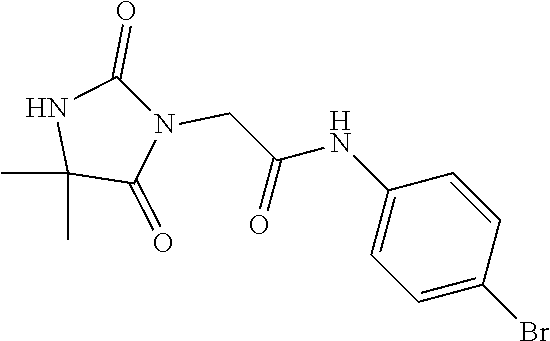
C00035

C00036

C00037

C00038

C00039

C00040

C00041

C00042

C00043

C00044
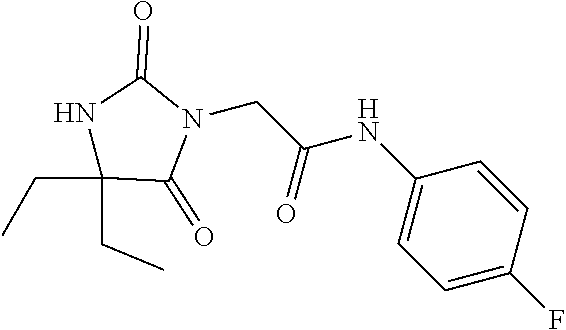
C00045

C00046

C00047

C00048

C00049

C00050

C00051

C00052

C00053

C00054

C00055
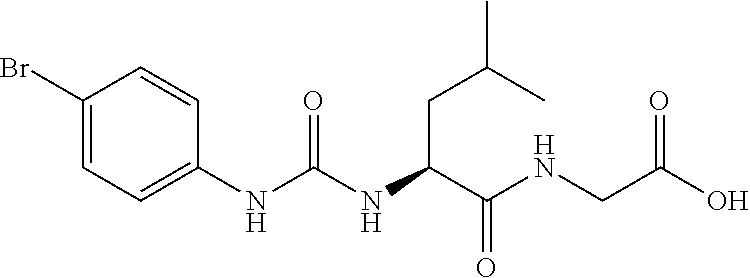
C00056

C00057

C00058

C00059

C00060

C00061

C00062

C00063

C00064

C00065

C00066

C00067

C00068

C00069

C00070

C00071

C00072

C00073

C00074

C00075

C00076

C00077

C00078

C00079

C00080

C00081

C00082

C00083
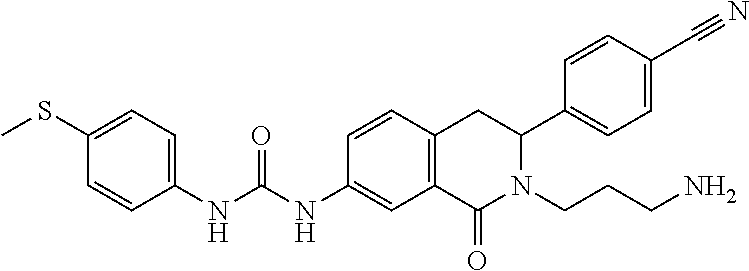
C00084

C00085

C00086

C00087

C00088

C00089

C00090

C00091

C00092

C00093

C00094

C00095

C00096

C00097

C00098

C00099

C00100

C00101

C00102

C00103

C00104

C00105

C00106

C00107

C00108

C00109

C00110

C00111

C00112

C00113

C00114
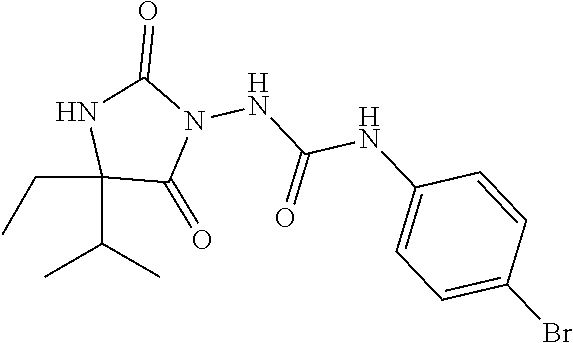
C00115

C00116

C00117

C00118

C00119

C00120

C00121

C00122

C00123

C00124

C00125

C00126

C00127

C00128

C00129
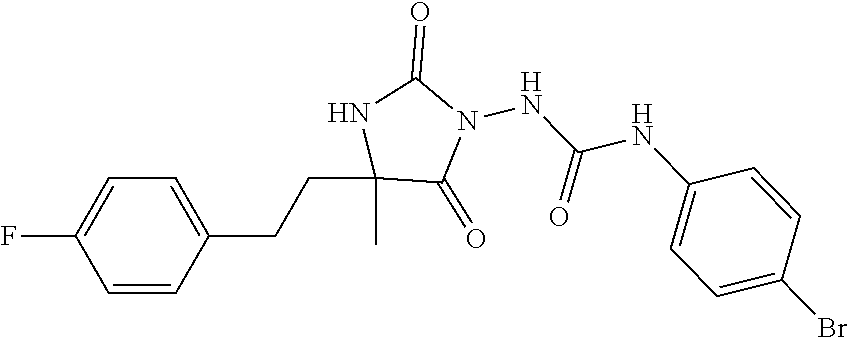
C00130

C00131

C00132

C00133

C00134
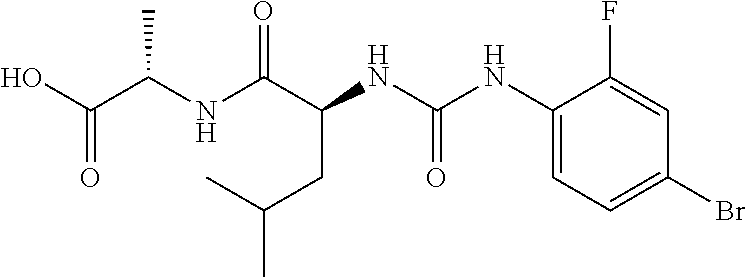
C00135

C00136

C00137

C00138

C00139

C00140

C00141

C00142

C00143

C00144

C00145

C00146

C00147

C00148

C00149

C00150

C00151

C00152

C00153

C00154

C00155

C00156

C00157
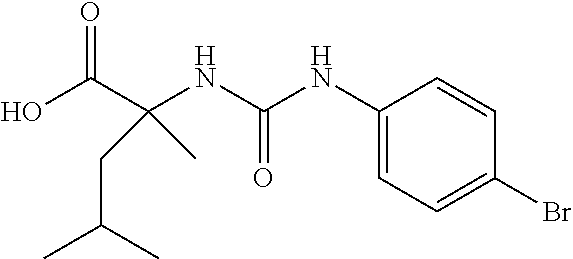
C00158
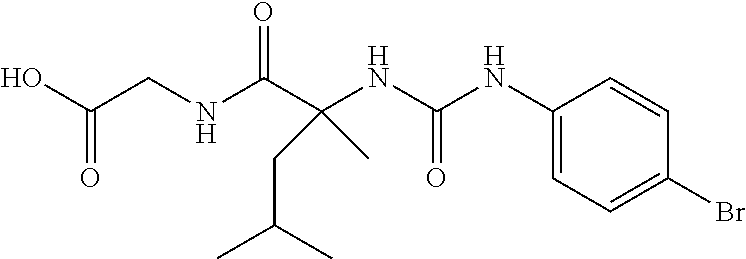
C00159

C00160

C00161

C00162

C00163

C00164

C00165

C00166

C00167

C00168
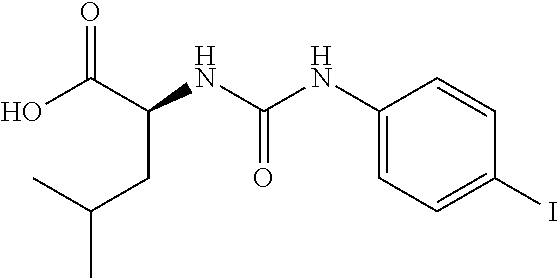
C00169

C00170

C00171

C00172

C00173

C00174

C00175

C00176

C00177

C00178

C00179

C00180

C00181

C00182

C00183

C00184

C00185

C00186

C00187

C00188

C00189

C00190

C00191

C00192

C00193

C00194
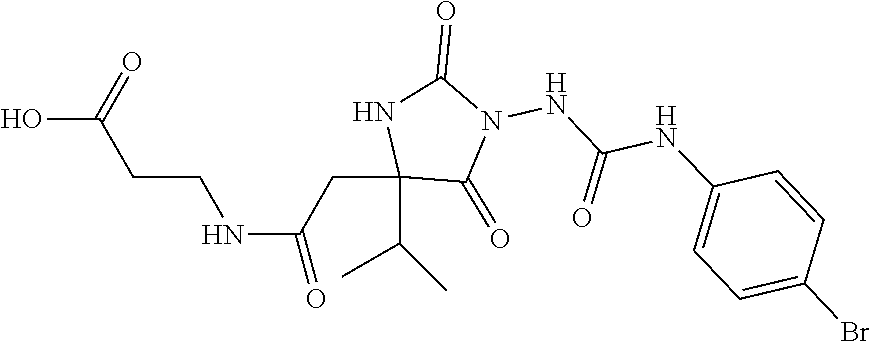
C00195

C00196

C00197
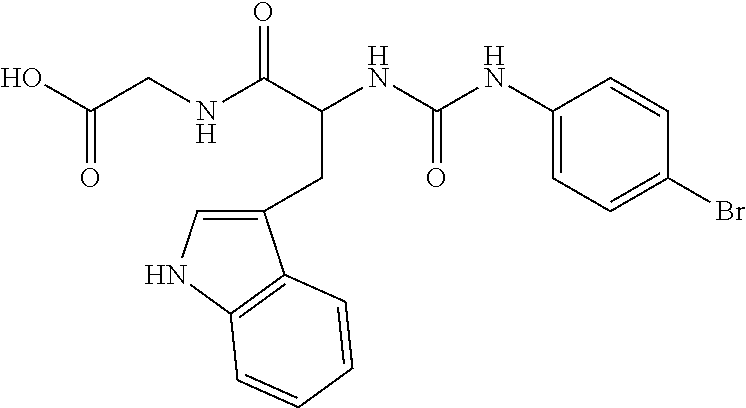
C00198

C00199
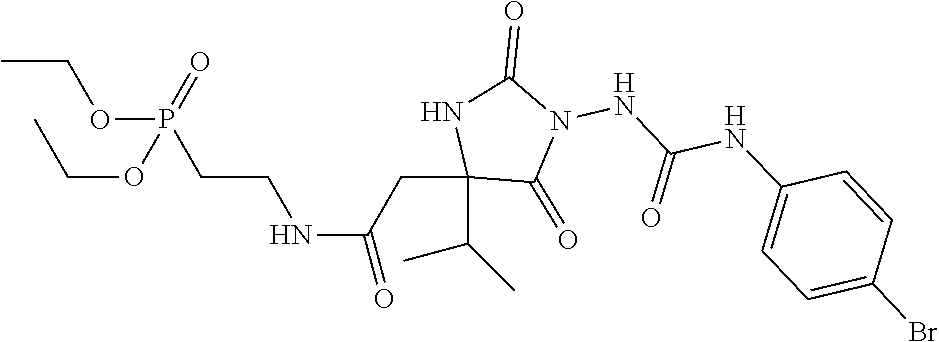
C00200

C00201

C00202

C00203

C00204

C00205

C00206

C00207

C00208

D00001

D00002
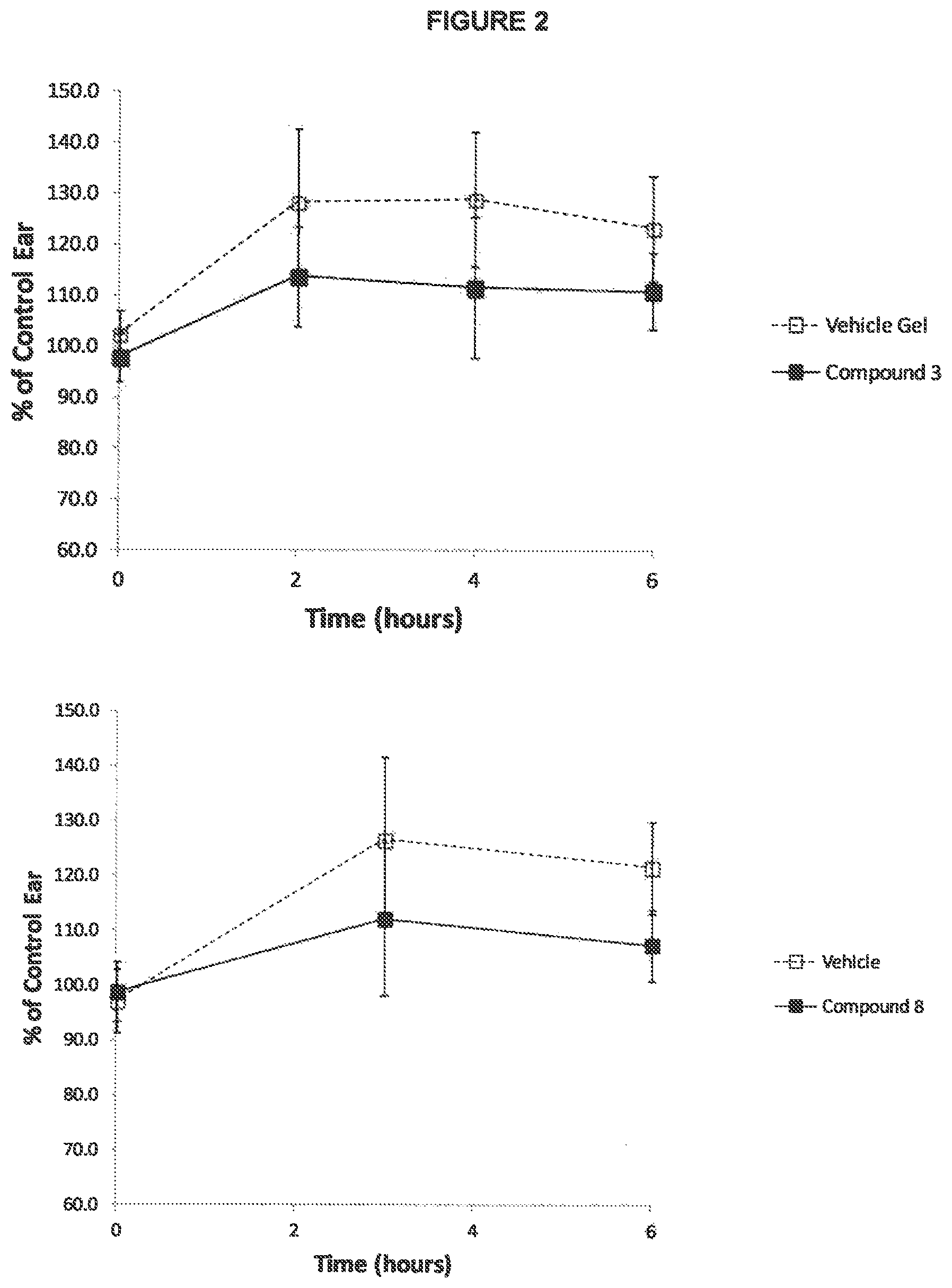
D00003

P00001

P00002

P00003

XML
uspto.report is an independent third-party trademark research tool that is not affiliated, endorsed, or sponsored by the United States Patent and Trademark Office (USPTO) or any other governmental organization. The information provided by uspto.report is based on publicly available data at the time of writing and is intended for informational purposes only.
While we strive to provide accurate and up-to-date information, we do not guarantee the accuracy, completeness, reliability, or suitability of the information displayed on this site. The use of this site is at your own risk. Any reliance you place on such information is therefore strictly at your own risk.
All official trademark data, including owner information, should be verified by visiting the official USPTO website at www.uspto.gov. This site is not intended to replace professional legal advice and should not be used as a substitute for consulting with a legal professional who is knowledgeable about trademark law.